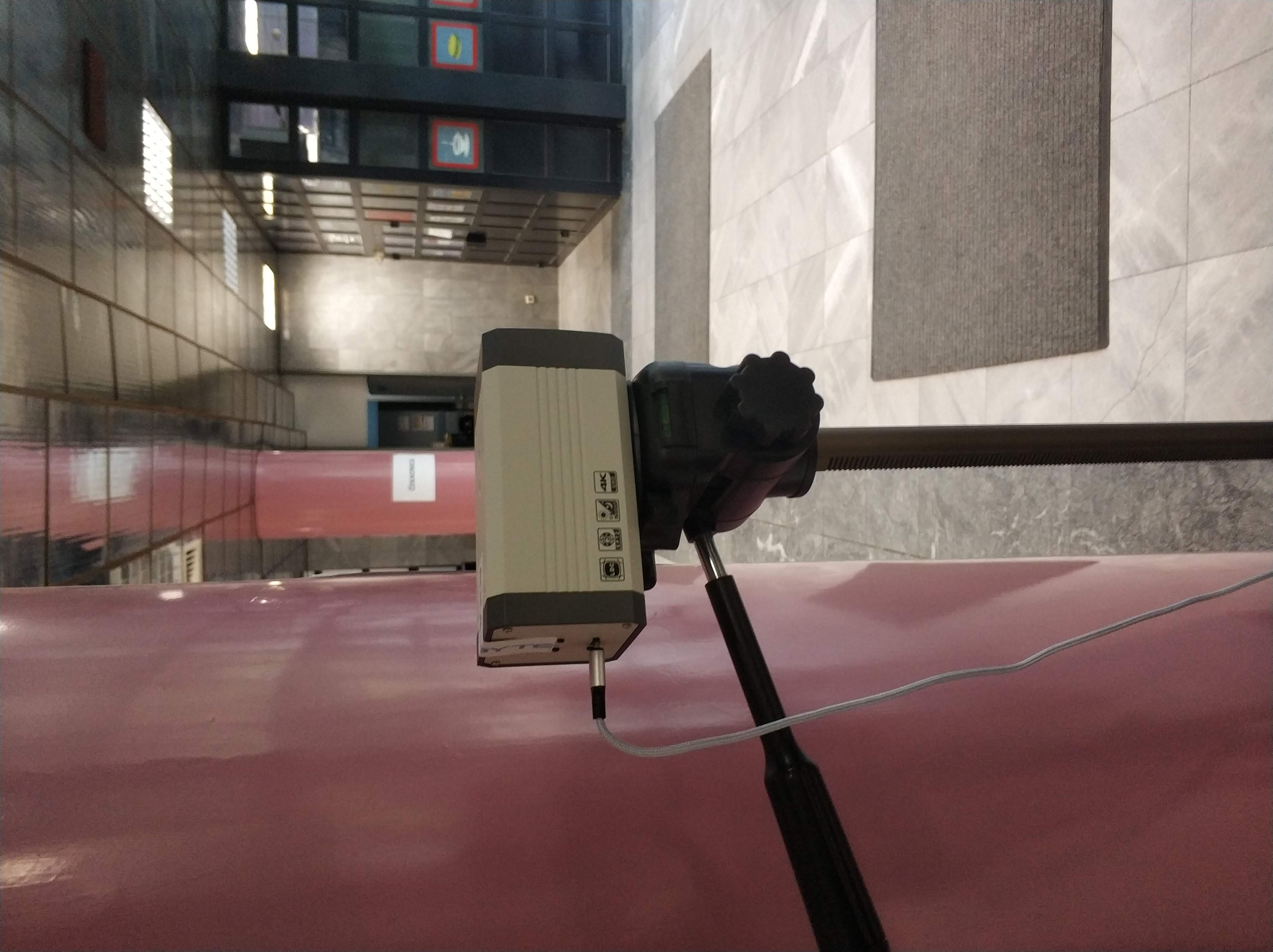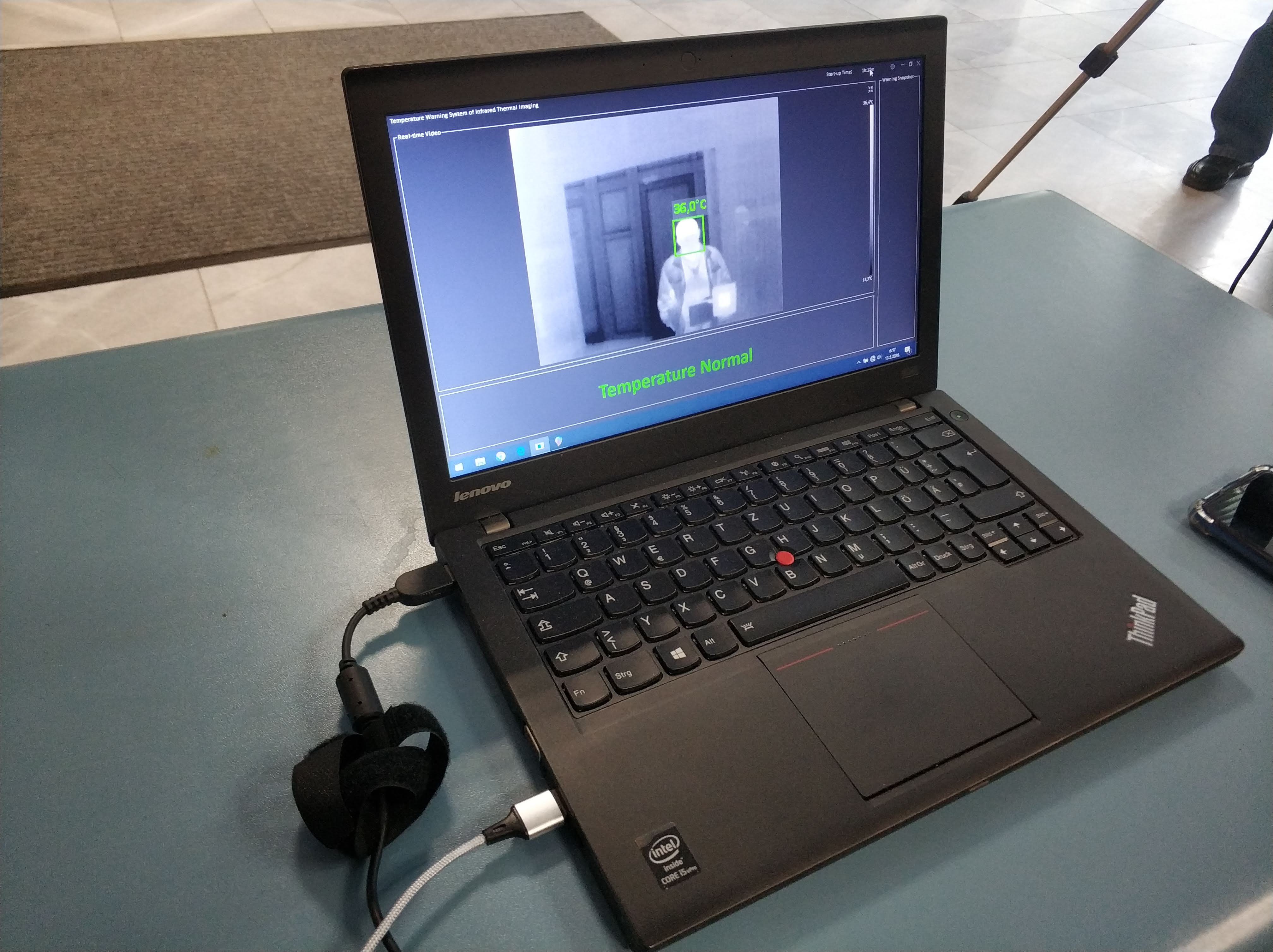Špancirfest and Porcijunkolovo - Cancelled!
June 21, 2020 - What are without a doubt the most famous Varaždin and Čakovec festivals have been cancelled, officials have now confirmed.
Špancirfest usually takes place over the last days of August, but that won't be the case this year. It was supposed to be the 22nd year of the festival, but due to bad epidemiological situation, it is better for everyone to avoid encouraging large gatherings of people.
"Since it is impossible to implement the measures prescribed by the Croatian Institute of Public Health at Špancirfest, due to the specifics of the festival and its content, the only possible decision, no matter how difficult it was, was to cancel this year's edition of the festival," said the main organisers.
There is nothing that could replace the feeling of Dubioza Kolektiv's music beat or the smell of fresh languši. Still, the organisers said they would post various videos of last year's Špancirfest which took place without issue this time last year, long before the coronavirus pandemic struck. Besides, there will be many prize games to comfort many disappointed people, and those disappointed people are both Croats and foreign visitors.
This year was reserved for Gibonni, Parni Valjak, Psihomodo Pop, Vatra, Urban, as tourist board director, Jelena Toth, confirmed for Varaždinski.hr. All of those concerts were supposed to be held at Kapucinski trg, and completely free. As Mayor Čehok said, Croatian musicians should have an advantage. So as to avoid sticking only with win, there were plans in place to open a Rakijarnica - a place where every person could try the most delicious and unique alcoholic drinks.
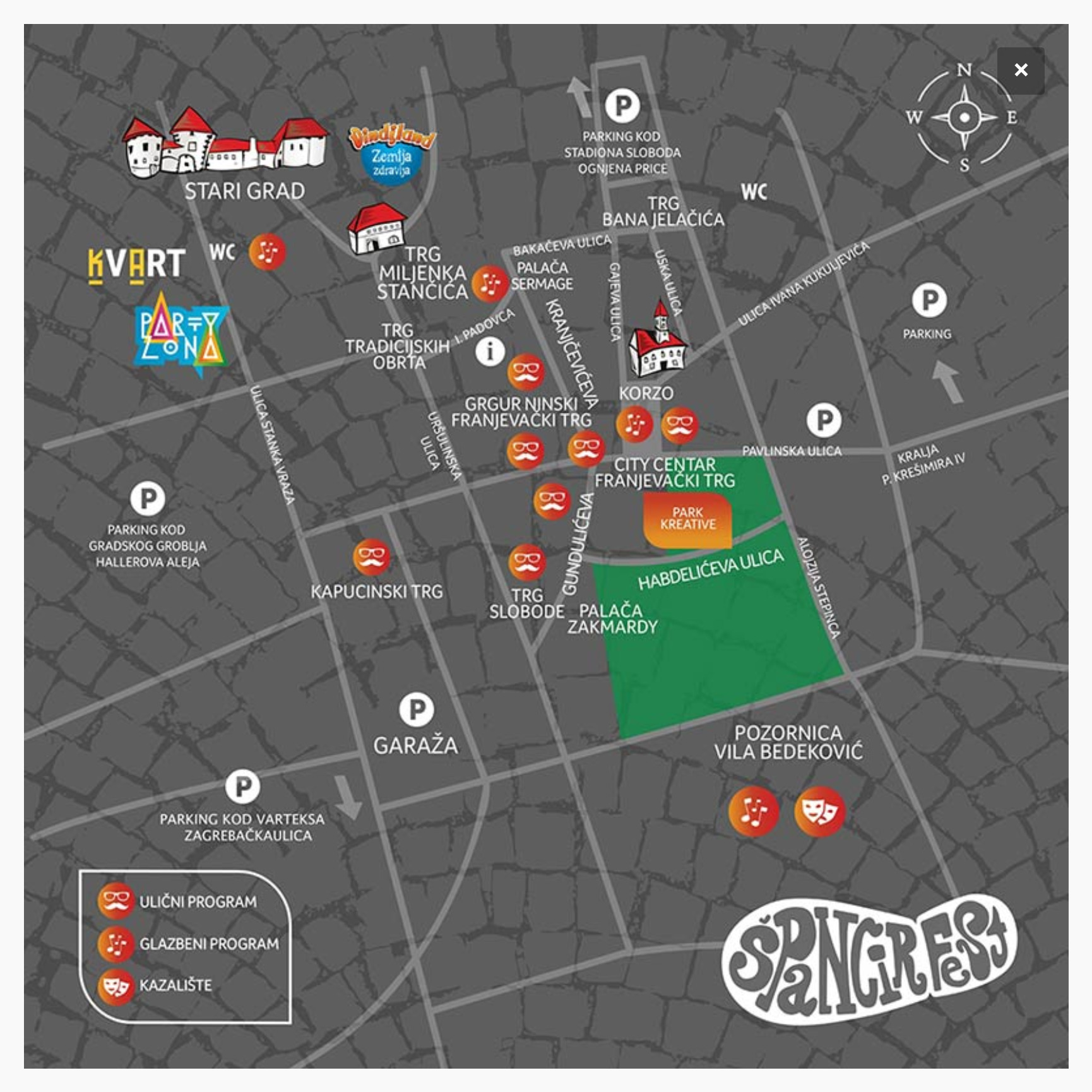
Špancifest | Website
The same decision for Porcijunkolovo made by the Mayor of the City of Čakovec, Stjepan Kovač, and the assistant director of the same city's tourist board, Boška Ban Vlahek.
Porcijunkulovo is a combination of tradition and modernity, a fair of traditional crafts, a cultural and tourist event that is impressive in terms of its size for this part of the region, and an event that turned central Čakovec into a lively modern gathering place full of various content. Since 1964, when the first festival was held, until today, the feast of Our Lady of the Angels in Čakovec is followed by more than 300,000 visitors, who can enjoy the displays and products of traditional craftsmen, various exhibitors, and local family farms.
One of the most recognisable signs of Porcijunkulovo are the umbrellas dangling over the city. This year, regardless of the cancellation of the festival, people will still have the chance to walk under those same colourful umbrellas and revive the feeling of past festivals.
Porcijunkulovo | Facebook Page
Pandemic Doesn't Dampen Varazdin Company's Solar Panel Business
The ongoing coronavirus pandemic has thrown a major spanner in the works economically in every possible sense, but one Varazdin company hasn't let it get in the way of their production, and they're doing better than anyone could have possibly imagined given the dire circumstances.
As Poslovni Dnevnik writes on the 19th of July, 2020, approximately 1,500 solar panels are produced on a daily basis at the plant at the entrance to the Northern Croatian town of Varazdin. Coronavirus has not harmed this Varazdin company's business, and the demand for their products is greater than they can manage to keep up with and produce.
"The price of one solar panel, some standard type, is 500, 600 kuna, depending on the power. And of course we know that for installation we always need a few panels. It all depends on the level of consumption of the house, whether it's two, three. four, or five kilowatts. So, the installation comes in costing a few thousand. Let's say from 7,000 - 8,000 kuna, all the way up to 20,000 kuna,'' explained the Stjepan Talan, the director of the Varazdin company Solvis, for RTL.
There is almost no part of the world where these solar panels aren't producing solar energy - from Germany, Italy, France to Canada and the United States. Their solar panels are also sought by the global technology giant - Google.
''Our most promising customer outside is in America, Google, a company that builds its own data centres and where we work for them with special cover solar panels,'' said Talan.
The factory belonging to this Varazdin company produces about half a million solar panels a year. Unfortunately, when we talk about solar installations, Croatia is at the very bottom of the European Union, but despite that, general interest in solar panels here in Croatia continues to grow significantly.
In order to encourage people to produce their own energy as much as possible and be energy independent, the state offers co-financing up to a maximum of 75,000 kuna.
For more on Croatian companies and products, follow Made in Croatia.
Visit Ludbreg on the Croatian Road Less Travelled
July 9, 2020 - Continuing the TCN series, The Croatian Road Less Travelled, Marc Rowlands explains why you should visit Ludbreg.
Situated in the far north of Croatia, just south-east of Varaždin and Čakovec and less than 20 kilometres from the border with Hungary, the small and picturesque town of Ludbreg is one of incredible contrasts and one with no small amount of ambition. Its close proximity to such neighbours pales into insignificance when you see the places Ludbreg would rather be judged against - this town is known as the Centre Of The World. The moniker was attributed when it was discovered, by accident, that it lies equidistant between many significant cities. Capitalising on the name, Ludbreg has charted these cities and their distance in a circular stone paving feature which can be found in the town's central square. 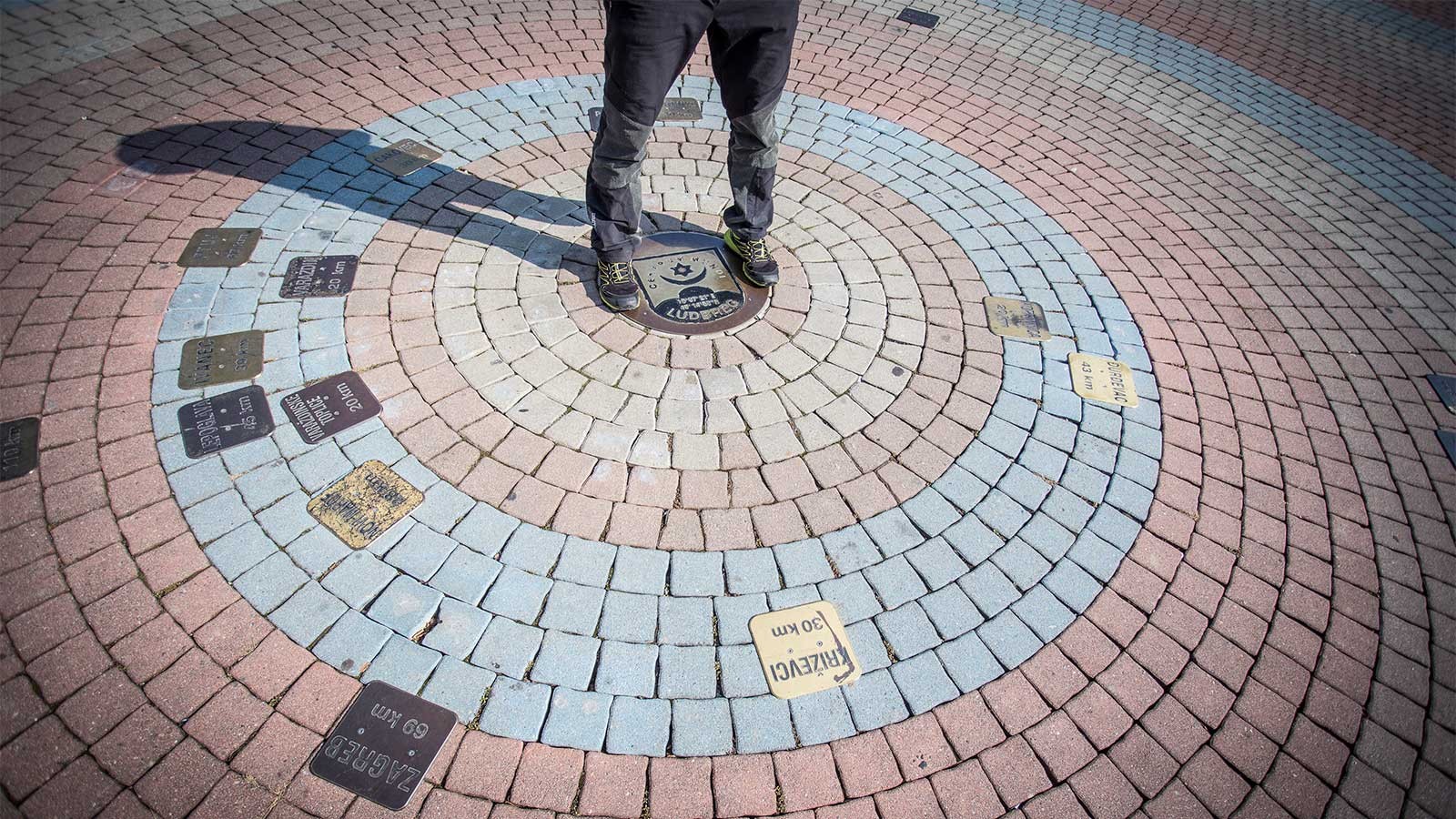
Visit Ludbreg, Centre Of The World © Croatian National Tourist Board / Bojan Markicevic
However, as much as the town might name-check Paris, Athens, Vienna and Budapest on its monument, there's actually no escaping the fact that it is actually a direct product of its local environment. Its close proximity to the river Drava - an important trading route since before Roman times - its major tributary, the river Plitvice, and its placing on the river Bednja, are doubtless the reasons for its position. That it sits on the border of three county lines - Koprivnica-Križevci, Varaždin and Međimurje - might be a modern administrative allocation, but it gives an indication of Ludbreg's mixed identity. 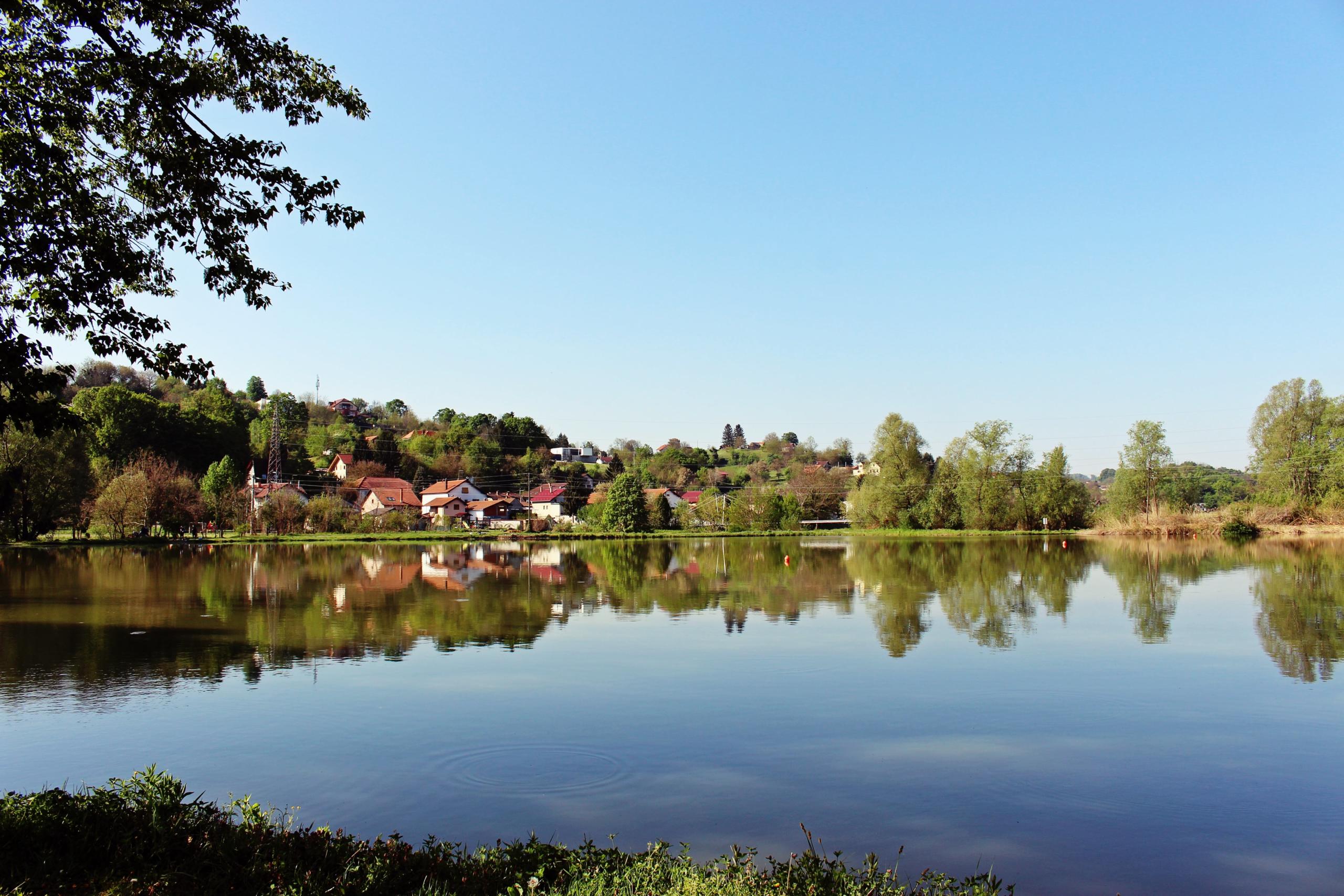
The best place to chill when you visit Ludbreg is Youth island © Ludbreg Tourist Board
To the town's east lie the vast flatlands of the Pannonian basin, to the south, a luscious green carpet covers the gently rolling hills of Zagorje, along the river Drava is the historic region of Podravina, stemming from the foothills of the Alps, to its north, historic Međimurje, then Austria and Hungary. You can see the land around the town juggle with this mixed identity, just as the town does; flat agricultural fields are interrupted by hills like Kalnički gorje or more gentle rises atop which beautiful holiday homes are placed. Nearer the centre of town, ultra-contemporary businesses lie next to routes of ancient pilgrimage. Neither here nor there, Ludbreg exists within a wonderfully mixed topography, with one foot in the past but a sharp eye on the future. 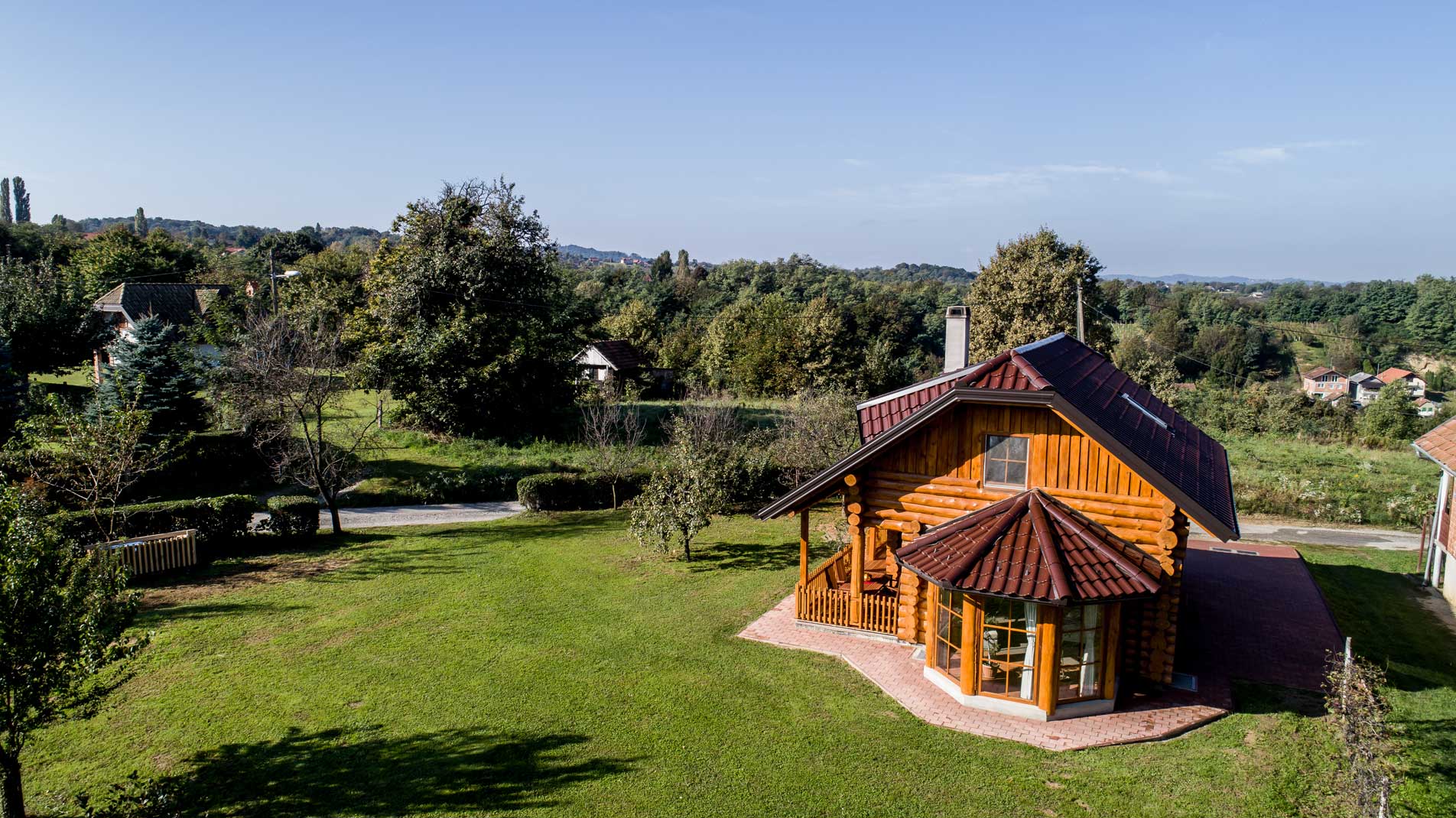
Hazelnut House holiday home, one option of where to stay when you visit Ludbreg © Varaždin Tourist Board
Why visit?
Truth be told, if you visit Ludbreg, you can see all of its sights in a day trip. And the town is perfect for just that. But, by doing so, you probably wouldn't get more than a tourist's glimpse of the place. Ludbreg is actually comprised of thirteen settlements that exist around the centre and it is within these quiet-looking hamlets and villages that most of the town's drive and ambition lie. This is where the people live. And, for a while, you can too. The whole town has a reputation for sustainable living and sustainable growth - pioneering waste management schemes, growing allotments granted to residents without gardens and technically advanced green power solutions. It is in these settlements that you'll find holiday homes designated to agro-tourism and ecotourism. Perfect for relaxing alongside only your nearest and dearest, they hold distinct, unique architecture, some have outdoor swimming pools and all are surrounded by clean, fresh air and nature. 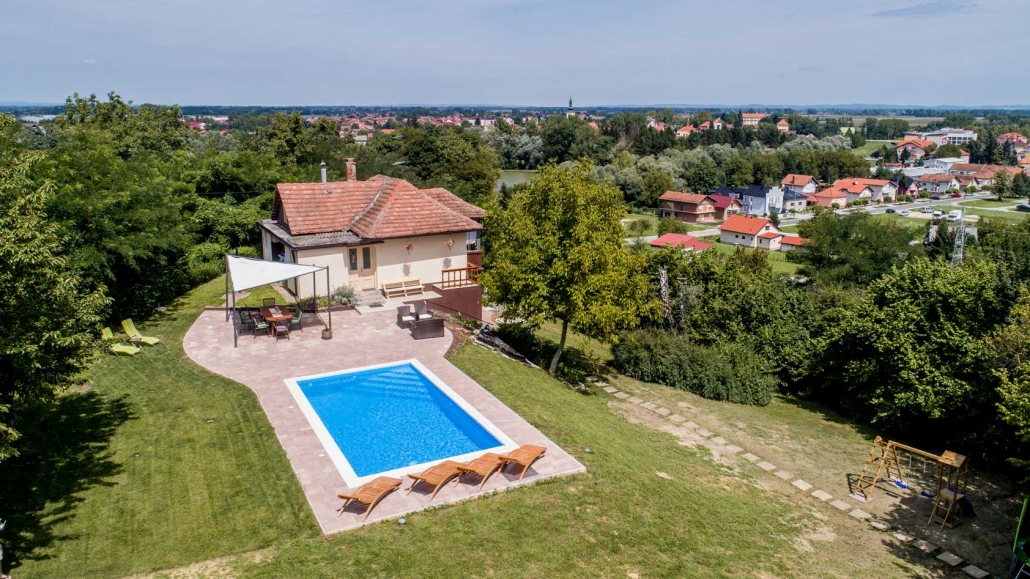
Villa Mila holiday home, another great place to stay when you visit Ludbreg © Varaždin Tourist Board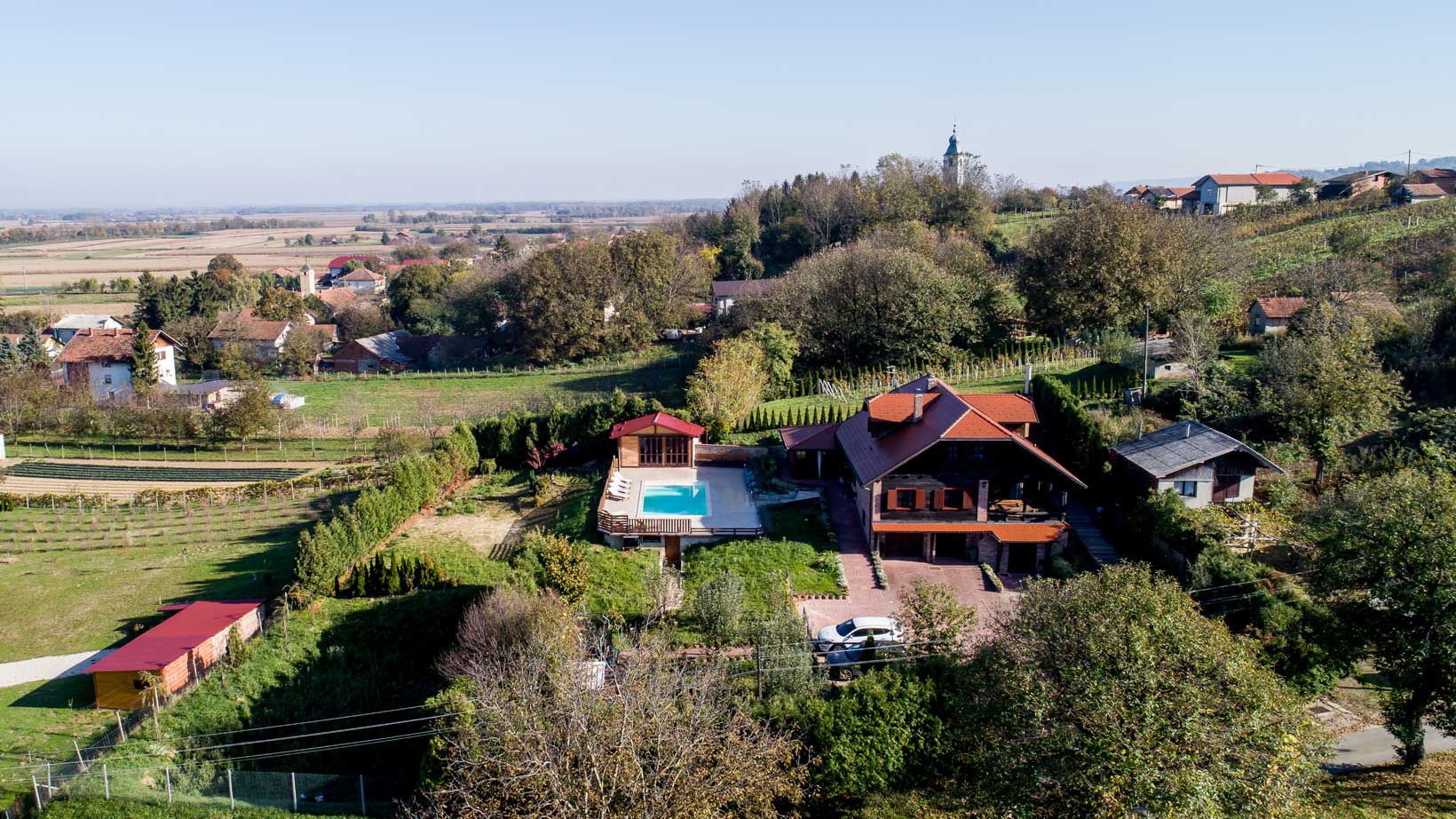
Rural House Gabrijela holiday home - you can get close up to nature and still keep the swimming pool when you visit Ludbreg © Varaždin Tourist Board
The bountiful nature surrounding Ludbreg is one which services the town's ancient industries, traditions and arts & crafts. Some of these you can see or join in with, the most famous being Ludbreg's wine roads. Take a tour of the area's vineyards, cellars and winemakers to sample great examples of continental wine. White wines are their forté and Graševina, Riesling, Pinot Blanc, Pinot Gris, Sauvignon, Chardonnay and Traminac are just some of the major league players available here, alongside rarer names like Moslavac and Manzoni. Muscat, Pinot Noir, Frankovka, Cabernet Sauvignon and Poštenjak can also be sampled.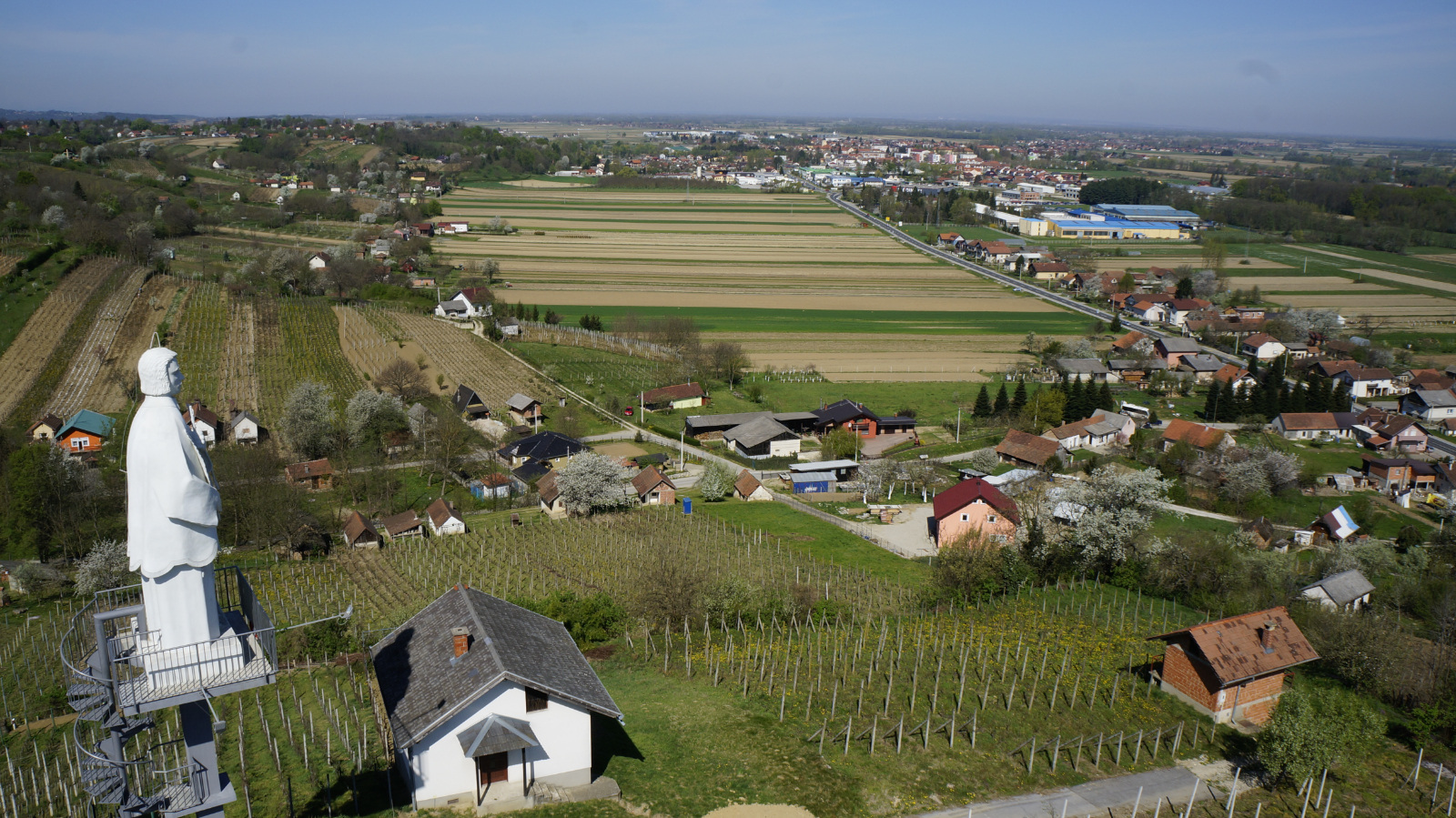
The wine roads surrounding the town are one of the best activities when you visit Ludbreg © Ludbreg Town
Alongside the sights, the other thing to catch when you visit Ludbreg is the events. In these regards, Ludbreg punches well above its welterweight. The town's event calendar is brimming with exciting or entertaining things to see and do. It wasn't so long ago that hundreds of participants and spectators from 33 countries descended on the town for the annual World Model Aircraft Championships. Ludbreg is used to happily hosting such hordes, its institutions beckoning thousands of visitors every year.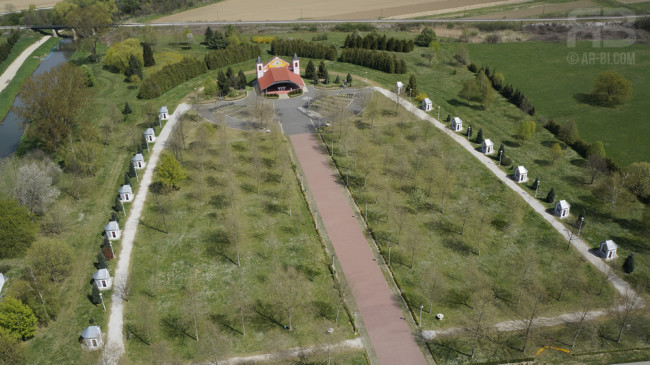
The peaceful approach to the pilgrimage site - one of the more famous reasons to visit Ludbreg © Ludbreg Tourist Board
The most famous of these institutions is the Catholic faith. Whether you believe the town to be named after a returning Crusader or an entranced winemaker, one history of Ludbreg holds a greater clarity due to its acknowledgement by the Vatican. Many people visit Ludbreg on devout pilgrimage because the Blood of Christ is said to exist here. When doubt entered into the mind of a local priest performing the Eucharist, it is said the vessel he held became filled with the actual Blood of Jesus Christ. Pope Julius II began investigating the claim thoroughly, so much so, that the miracle wasn't confirmed until the reign of his successor, Pope Leon X, in 1513. Pilgrims have visited Ludbreg ever since. The relic of the Precious Blood of Jesus is kept in Ludbreg's parish church of the Holy Trinity, although a special site for pilgrims was built on the edge of the town centre in 1992.
The pilgrimage site which the faithful flock to when they visit Ludbreg © Fraxinus
The most-famous architectural building in Ludbreg (and the prettiest) is the Baroque castle Batthyany. The castle dates from the reconstruction of the older medieval castle on the same site by Count Louis of Batthyany in the mid-18th century and today houses the workshop of the Croatian Restoration Institute. There, painstaking repair work is undertaken on historical items from all over Croatia which have been damaged by the years or in the war of the 1990s. Walking around the ultra-modern town centre of Ludbreg offers no clue that behind this castle's walls such careful preservation of the past is taking place.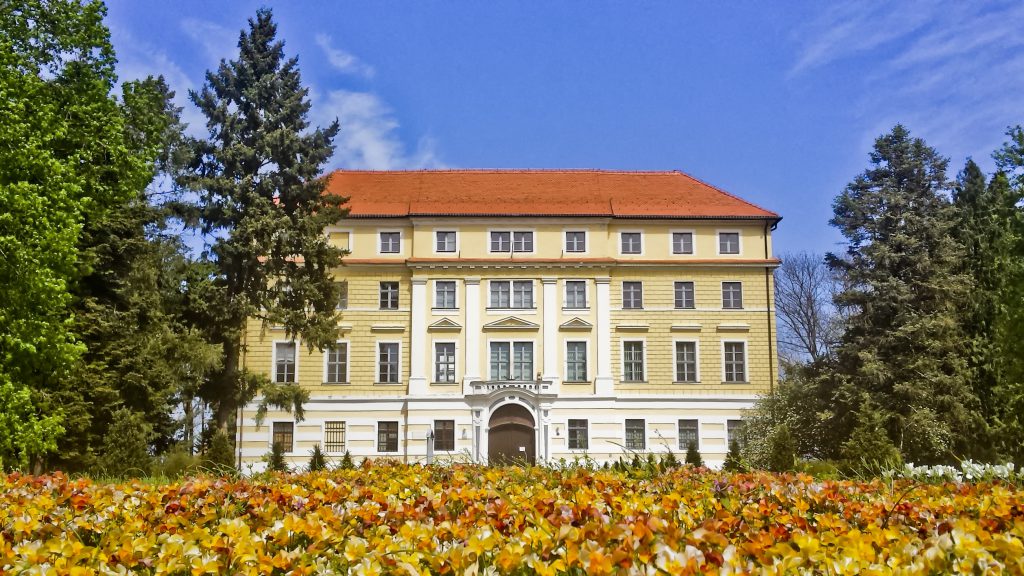
Batthyany castle in Ludbreg © Ludbreg Town
The other great institution of Ludbreg is also one which dedicates its life to preserving the past, but the history it protects belongs to the people, not the church. The cultural and artistic society KUD Anka Ošpuh, named after a female Partizan hero, has been operating in Ludbreg since 1976, although its roots are older. Many female-led charitable organisations operate in and around Ludbreg. That much of this work has existed in such hands for up to 150 years is simply remarkable, particularly within a broader Croatian society still viewed as patriarchal. Traditionally, while the young men of Ludbreg were drawn to more manly pursuits such as sports, bombastic brass instrument-playing and all-male choirs rooted in those of the church, the town's women were instead occupied with chores, charity work and the songs, dances and costumes of folklore. Folklore societies and their preservation of local, peasant traditions became incredibly popular all over Croatia after the Second World War. Early examples in the area of Ludbreg include Braća Kavurić from Martijanec (founded 1945) and that of Kutnjak (1947) with similar established in Sveti Đurđ, Sesvete Ludbreški, Dubovica and Vrbanovac. 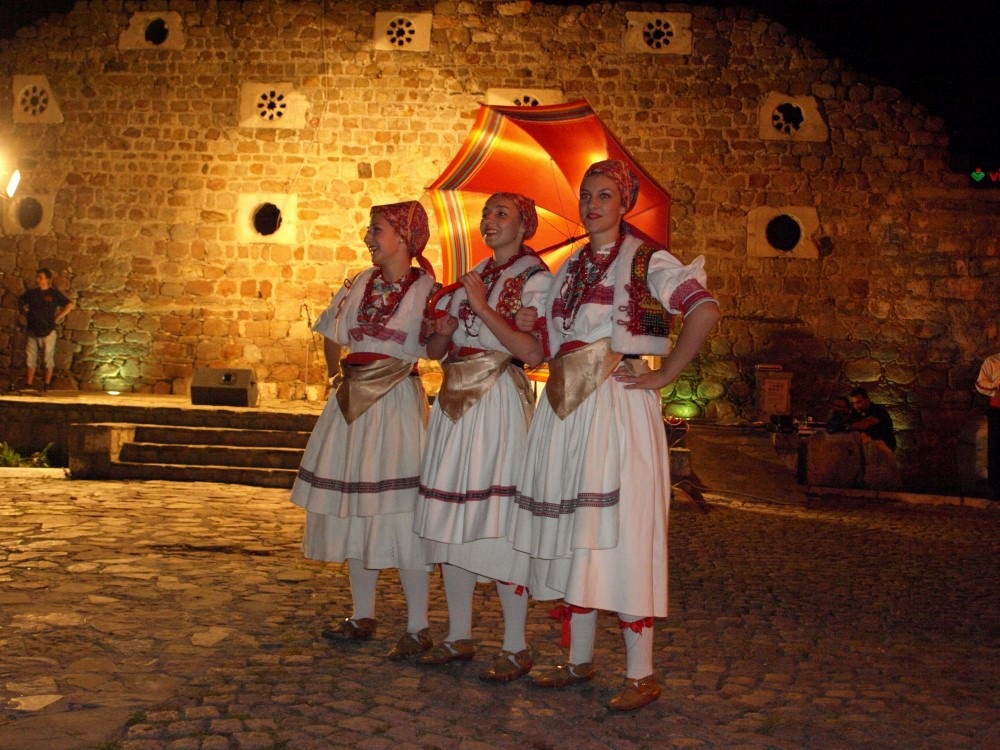
Contemporary members of folklore society Anka Ošpuh © Ludbreg Town
These village societies were mixed, but with the absence of any such society in central Ludbreg, it took 22 women to form the town's own. They made a great success of doing so. Although initially so poor with resources they had to practise in the basement of factories and local houses, by 1977 the society had grown to contain 79 members and was able to establish its own group of attached tamburica musicians and an all-female choir. As their reputation grew, the society absorbed many key contributors from similar groups in surrounding villages and their assets. To the 12 valuable Moslavina folk costumes with which they began, KUD Anka Ošpuh were able to add examples from Podravina, Slavonia, Dalmatia, Lika and even some worn by Croats in Vojvodina (present-day Serbia). Many of these costumes are still preserved or worn by society members to this day, kept alive, like the songs and dances of the region, by the society. These days, KUD Anka Ošpuh is one of the most highly regarded in Croatia and has performed all over the country, plus internationally at folk song and dance festivals. Its essential work is passed down to children and young people of the area in order that these traditions survive. Highly skilled and beautifully presented, they offer a glimpse of authentic and historic local culture. If you get the chance to see them, you simply must.
Ludbreg © Ludbreg Town
How to get to Ludbreg: The town lies approximately 100 kilometres by road from Zagreb, with bus or car being your options. Ludbreg has its own train station with trains running direct to Zagreb, Osijek and Varaždin.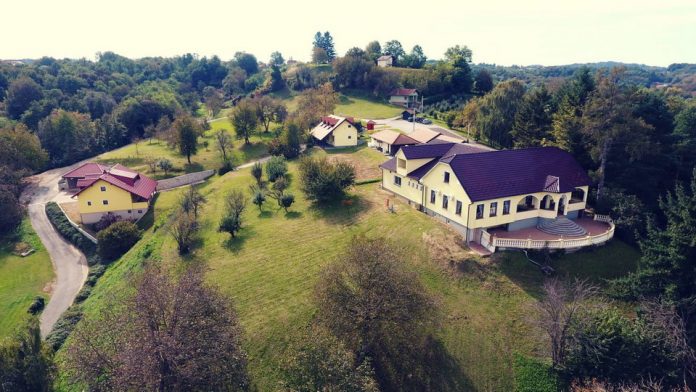
Črn-Bel restaurant © Črn-Bel restaurant / Luka Krušec (LuMedia)
Where to eat: Surrounded by vineyards and beautiful nature, the Črn-Bel restaurant is a brilliant spot for lunch or dinner. They do great grilled meats, superior pizzas from a wood-fired oven and sharing platters, with most ingredients sourced locally. Restoran Raj in the town centre is much more of an informal, family place, with pizzas for the kids and shared grills or deep-fried seafood for the parents.
Where to drink: Pivnica Mejaši is a great pub in the centre of town where you can refresh yourself. They have a lovely, covered outdoor terrace and a good pub-grub menu, including pizzas, which will satisfy for lunch or an informal evening meal.
Ludbreg's first piece of street art is a mural of the moon © Ludbreg Tourist Board
What's new: Although the 'Centre of the World' is the star of the town's main square, you'll not miss several new additions to their menu of monuments. The latest is an artwork dedicated to young, local athlete Sara Kolak, a javelin player who earned a Gold medal for Croatia at the 2016 Olympics. She shares the square with a fountain, a photo opportunity spot and a remarkable solar-powered tree where you can charge your phones and other devices for free. For the cool cats, the town has a brilliant mural of the moon on one building facade – it's Ludbreg's first street art piece. The town will host a conference on cycling tourism from 16 – 18 September 2020.
Ludbreg's town centre © Ludbreg Town
What not to miss: For a small place, the list is huge. Don't miss the parish church of the Holy Trinity, its interior is delightful. You must visit the castle too and take the pilgrim's walk up to the modern ecclesiastical point of worship. LUMEN, a Ludbreg youth organisation, hold great music and theatre events. Centre of the World Day is April 1 and everyone joins in during the town's big day. The fountain on the central square flows with wine for the occasion. The town's carnival sees joyful residents march the chilly streets in costume. It's 164 years old and takes place on Shrove Tuesday. Ludbreg's Advent festivities grow year upon year. Also in winter, at the end of January, the town's winemakers present their fresh batches at the Young Wine Days.
Ludbreg's central square. During its three-day International Flower Festival, the town explodes with even more natural colour © Ludbreg Tourist Board
The town's three-day International Flower Festival is the second biggest in Croatia and is an explosion of natural colour. You can visit it at the end of April / beginning of May. The Ludbreg Bike Tour is a 15 kilometre run around the town, with a great afterparty at the picturesque Youth Island (main picture). Two more great parties are Idemo Otok in June and Crazy Island in August. Strange to imagine such a small place hosting two electronic music festivals of such far-reaching repute, but it does. Young dance music enthusiasts from all over Croatia travel here to attend them. Again, they take place on Youth Island. Although pilgrims visit throughout the year, many reserve the journey for the seven days surrounding Holy Sunday. KUD Anka Ošpuh holds folklore events throughout the year including a memorial performance for former president Mirjana Bošnjak, a springtime celebration, Ludance (which focusses specifically on local folklore), a wintertime celebration, Christmas show and, pick of the bunch, Folklore Meetings in the Centre of the World, during which they're joined by outside folklore societies. KUD Anka Ošpuh's great tamburica orchestra also play many dates independently, as do the once-attached but now independent, all-female Podravina choir.
What to buy: Ludbreg has had a beekeeping society for over 70 years and local beekeepers know their stuff. Ludbreg honey is a great gift to take home, as are any of the bottles of fine wine produced around the town.
Ludbreg's town centre © Ludbreg Town
On these links you can read about the other destinations in our The Croatian Road Less Travelled series:
Osijek - the capital of Slavonia, on the banks of the Drava
Donji Miholjac - a hidden gem in the heart of the Pannonian basin
For the latest news from Ludbreg, check out the dedicated TCN section.
For the latest travel info, bookmark our main travel info article, which is updated daily.
Read the Croatian Travel Update in your language - now available in 24 languages
Hvar Tests Rapid Temperature Check Tech from Varazdin in Corona Fight
June 16, 2020 - Some new rapid temperature check software developed by a Croatian company in Varazdin is tested on the island of Hvar - an outstanding tool in the battle against corona, especially against the second wave.
This would be absolutely perfect for the island of Hvar, was my first reaction when the technology was shown to me and explained.
Croatia's premier island, whose most famous son, Ivan Vucetic, discovered the art of fingerprinting. The wellness island where organised tourism in Europe began in 1868 with the Hvar Health Society. And an island which did an outstanding job keeping its citizens safe during the corona era. Just two cases recorded, both recovered, both from islanders returning from jobs in Austria.
Jelsa on June 12, 2020, the place where this little story began on Hvar.
Some days earlier, I was at home in Varazdin when my web developer, Bernard Toplak from Exabyte, invited me to the 9th birthday party of his favourite team, NK Varteks. The party was 75 metres from my front door, and we had things to discuss and he had something to show me.
As TCN wrote previously, Bernard has developed Croatian software with Chinese technology to produce a rapid temperature check measuring system at a distance of 5 metres, which can process 30-40 people at one time and flag anyone with a higher temperature. Bernard explains more in the earlier TCN article as well as in the video at the end of this article.
The uses are multiple - borders, ferries, catamarans, hotels, kindergartens, old people's homes, hospitals, restaurants, sporting occasions. After a successful 2-week trial in a Varazdin hospital, Bernard agreed to let me try it somewhere else.
And where better than Hvar, especially I could persuade Suncani Hvar Hotels to accommodate Bernard and his family while we tried it out.

I wrote to the Hvar police chief, the mayors of Hvar, Stari Grad and Jelsa, the Hvar and Stari Grad tourist board directors, and Suncani Hvar Hotels. Almost all replied enthusiastically. And so it was that Bernard and I arrived on Hvar to present the idea to the police chief, Hvar and Stari Grad tourist boards, Stari Grad mayor and Suncani Hvar Hotels, once Bernard had checked in to Hotel Riva.
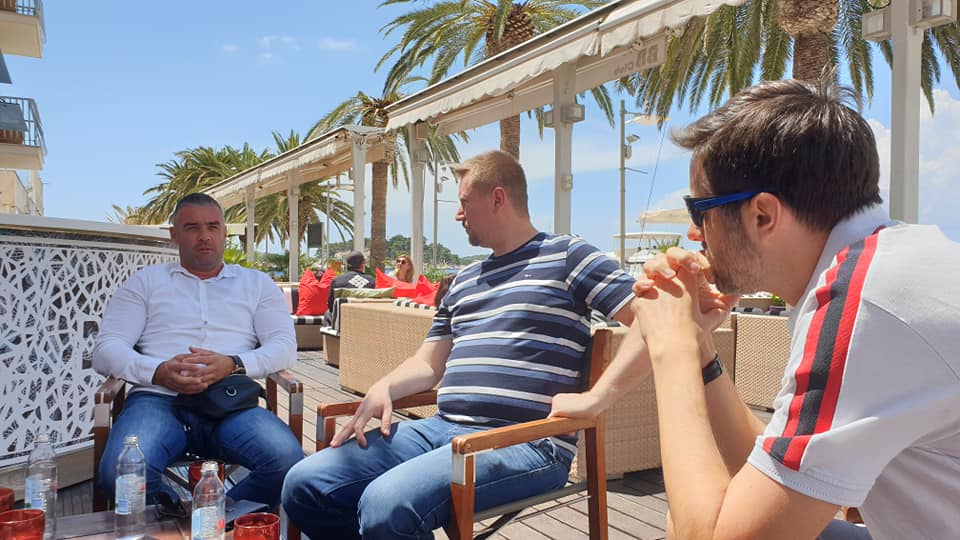
It was a very lively chat, with plenty of questions from all sides.
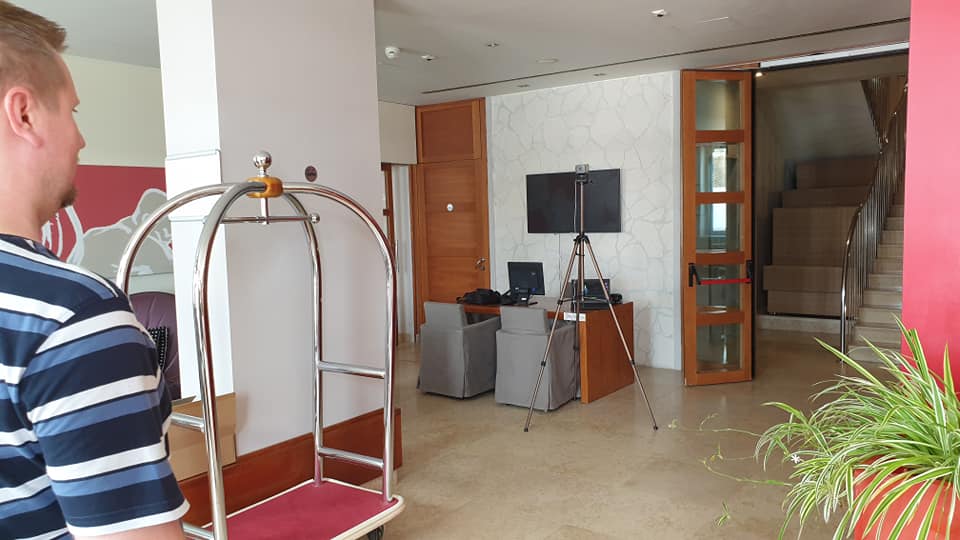
A quick demonstration in Hotel Riva before the main job the next day.

We started at the Stari Grad kindergarten, where national television was waiting.

And then to meet the team at the Stari Grad old people's home to demonstrate the system there.

The system identifies the head and measures the temperature under the eyes, producing a reading above the head of each person. And a red flag and alarm will appear for any high temperature. And the thermal imaging ensures no GDPR issues.
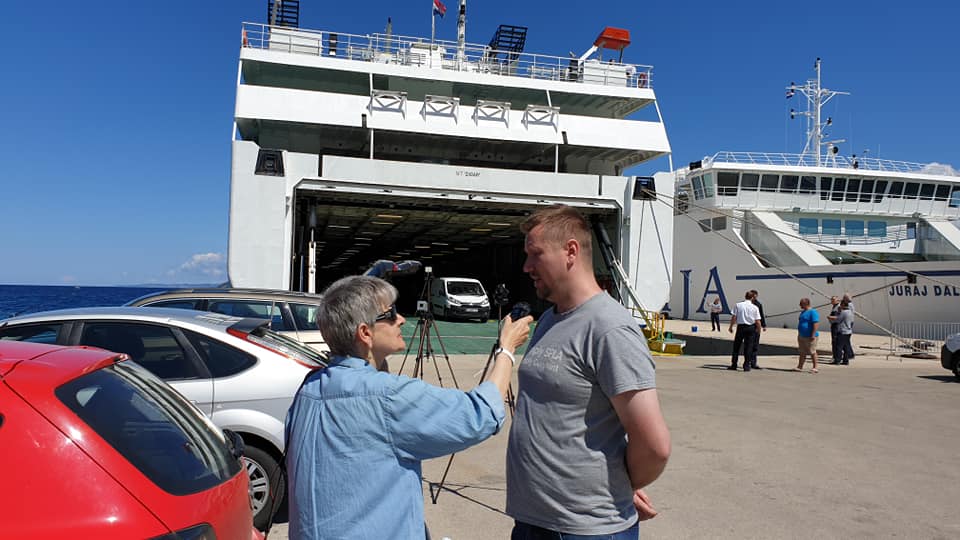
Next stop the Stari Grad ferry, where Radio Split took an interest.
Temperatures all ok on the 08:30 from Split.
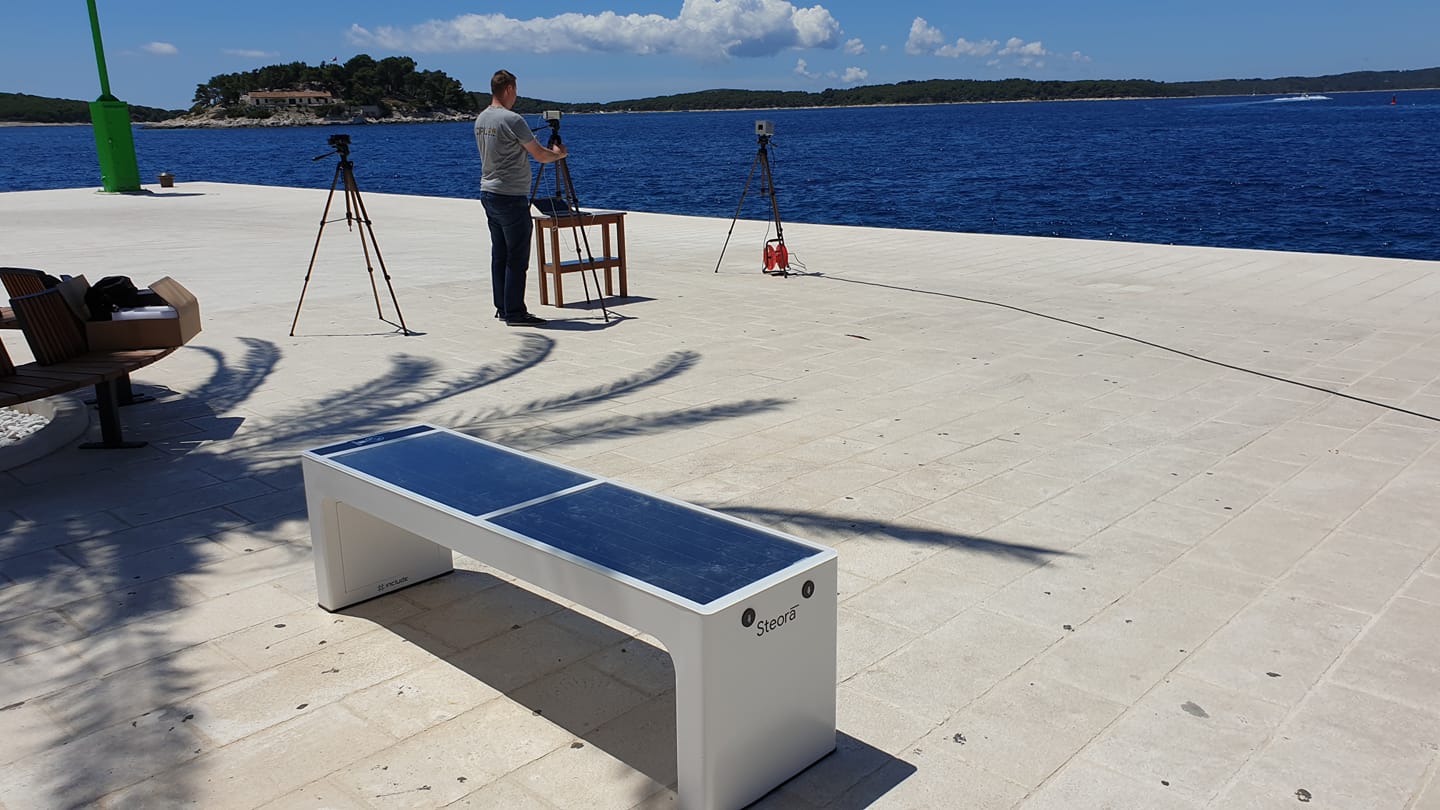
Time to set up on the exclusive Hvar Riva.
Healthy passengers on the 12:30 Krilo catamaran.
Back to Jelsa, where my day had begun to catch passengers on the 18:10 catamaran arrival from Split.
A fascinating day, and a great tool in the fight against corona, especially should a second wave come. You can find the TCN video report of the day and an interview with Bernard in English below.
If you are looking for more information about the system and applications, please contact This email address is being protected from spambots. You need JavaScript enabled to view it.
Varaždin Company ExaByte Creates Hit Rapid Temperature Measurement System
June 2, 2020 - One of the things we have to accept as a part of our "new normal" life post-corona is that our temperature is going to be measured regularly when trying to enter some institutions. Thus, a Croatian company from Varaždin, ExaByte has created a system that will make it as simple and efficient as possible.
Ines Brežnjak writes for dnevno.hr about the ExaByte company. They have been in business for 12 years now, working on the development of sophisticated IT solutions with implementations in numerous industries (including advanced systems for news websites, the integration of the current business solutions with advanced e-commerce solutions, software support to the industrial manufacturing through the implementation of the artificial intelligence technologies). Now they've decided to develop IT technologies to be used to prevent the spread of coronavirus, protect the healthcare workers, and in many other industries. During the COVID-19 pandemic, they started developing a system that uses artificial intelligence to measure someone's body temperature rapidly. Their system is, compared to similar existing products on the global market, much cheaper, mobile, and simple to install and use.
New Time - New Technologies
"As we talked to a colleague who has a medical degree, we recognized that being able to control the bodily temperature of many people is one of the bottlenecks and critical points in the age of the epidemic. The standard technology used here these days is measurements with contactless thermometers, which is a technology not up to the challenge during the pandemic times. When you want to use such a handheld contactless thermometer to measure the temperatures of each person in larger groups, such as in hospitals, health centers, factories, schools, or daycare centers, many problems appear", Bernard Toplak, the ExaByte owner explains. Those include an increased risk of infection for the person doing the measurement, as the person holding the thermometer must come within a meter of the person whose temperature is being taken, and who is potentially infected. Also, those measurements can be very imprecise unless they're used properly, and the variation can be up to 2 °C. Many of the hospitals in Croatia have erected mobile tents where the measurements are performed, and such measurements are done in the open, on people with colder foreheads. None of that complies with the specifications and the instructions written by the producers of contactless thermometers. They're designed and calibrated to be used at room temperature and indoors.
It's evident that handheld devices are just not up for the challenges and dangers of today. That's why numerous systems based on thermal imaging infrared cameras are being introduced worldwide to measure temperature. The solutions that were available in Croatia in March and April were based on security cameras with night-vision capabilities, and they cost between 18 thousand and over 26 thousand euros. That's why ExaByte decided to create their own solution, not compromising on the quality, but at just the fraction of the cost. They've worked closely with a well-renowned producer of specialized thermal imaging cameras since early March, developing software based on artificial intelligence, which can control body temperatures of a group of people fast, using the thermal imaging camera and a reference black body. And, Toplak is proud to say they were successful, and they have a system which is much cheaper than the competition, and much simpler to install and use and is mobile.
Features of the system include a group screening of the bodily temperature without stopping, ultra-fast measurements (it can measure up to 9 times per second), it's mobile (can quickly be taken from one location to the next if needed), it's simple to install and use.
The Same System is Used Worldwide
"The same system was recently implemented in thousands of hospitals in China and all over the world, in factories, schools, and other locations where there are many people. For instance, our partner's cameras are located on all subway stations in Wuhan, the epicenter of the pandemic. In Croatia, you can find equipment by those who usually sell surveillance (security) cameras, which have been improved so they can measure temperature instead of performing night-time surveillance. Some of the solutions are quite good, but some of them are not exactly of high quality, especially if they don't use the black body device to calibrate the measurement. Our cameras have been developed to measure temperatures, and not for night-time surveillance," Toplak said when asked if similar systems are used elsewhere.
A very precise infrared camera is used as a fundamental element of the system, which was developed to measure temperatures in industrial settings, such as to protect against overheating of machines and plants, for protection against fires, to supervise the electro-installations, the transformers, etc. The camera has a very high resolution and precision, which allows us to be precise at a distance of over 4 meters. That's what makes the system perfect for installation at the entrances to the hospitals, factories, schools, daycare centers, public administration waiting rooms, and other areas where many people are found at the same time.
The other key element is the reference heat source, the so-called black-body element, widely used to calibrate the infrared effect of the optical systems, the infrared detectors and other instruments using the infrared radiation.
"Other systems, which don't use the black-body source, are unable to achieve precision, which depends greatly on external influences (winds, drafts, sudden changes in the temperature, etc.). Our system re-calibrates nine times in a second using the black-body source, which gives us the precision with the deviation of up to ±0,3 °C at 4 to 5 meters. Our software is built on our many years of experience, but also our partner's rich experience, and they're a factory producing infrared sensors and precise industrial cameras", Toplak explains.
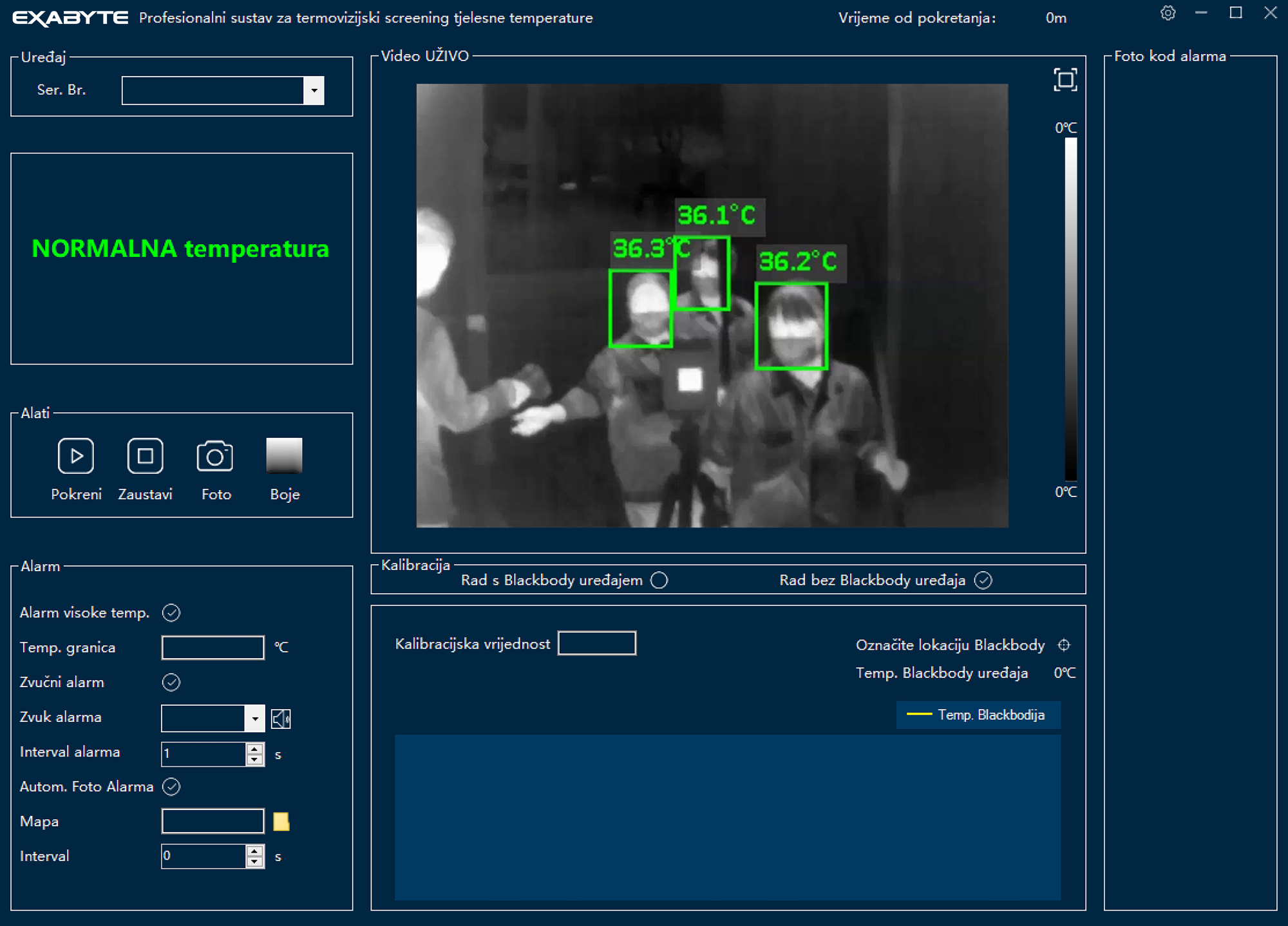
The prototype of their system is being tested in Varaždin hospital, where such technologies can significantly help. ExaByte has let the hospital use it for free, and the feedback is very positive. IT was the feedback that led them to offer their system on the market, not just in Croatia. They're already talking to partners in Italy, Germany, Slovenia, etc., and many of them are interested in ExaByte's solution, Toplak concludes.
If you would like to find out more information about this product, please contact This email address is being protected from spambots. You need JavaScript enabled to view it. Subject Temperature.
To find out more about business in Croatia, follow our dedicated Business section.
New Croatian Travel Restrictions: Meet the Neighbourhood Borders of Varazdin
March 26, 2020 - So how do the new measures and travel restrictions in Croatia look at a local level. A snapshot from Varazdin resident Paul Fischer or Rural Property Croatia.
All they need to do now is to cut the phone and the Internet and the television, and we would have no idea what is going on.
The new travel restrictions in Croatia have come into force, in a bid to curb the spread of coronavirus,and it is clear that the authorities are taking this VERY seriously indeed.
The first inkling I had locally was last night here in Jelsa on Hvar. I have been here for about two weeks in self-isolation with my family, and I am yet to meet anybody from the island. I am chained to the laptop from 5 am until midnight, apart from meal breaks and one precious hour when I go for a walk alone by the sea or along the riva - there is absolutely nobody else about.
It is a walk I can take no longer. Two police cars were patrolling the town of Jelsa last night, and I was informed that the outside world is now only for food shopping, pharmacy visits and other essentials.
While inconvenient, I fully support these measures and I am very impressed at how seriously the Croatian authorities are taking this, after a slow start. It is a policy which will save lives.
But how is it elsewhere in the country? Now that we are not permitted to travel, it is hard to tell, but the Internet is a wonderful thing. My good friend Paul Fischer, a longterm resident of Varazdin, posted this on Facebook this morning, which gives a very nice snapshot of how things look on the neighbourhood level - at least where he is.
Do you have an interesting story with photos of the new measures where you are in Croatia? Send through to This email address is being protected from spambots. You need JavaScript enabled to view it. Subject New Measures.
And now, her is Paul Fischer on life in his hood.
Just to compare with how things are being done where you are.....
In Varaždin, new neighbourhood borders have been established where each has at least one groceries shop and chemist within it. Roadblocks have been established to prevent us from moving from neighbourhood to neighbourhood without reason. To get the necessary permission, you need to convince the local civil defence people of your reason/s and they will give you a code number. You must present your photo ID at any roadblock and quote your permission number, they will check that you look like you are doing what your permission allows and, if so, let you through. The pic is of the checkpoint near me.
Only one person may enter a shop (or be in a vehicle) and you must have gloves and mask before they let you in and spray you with ... whatever. Everyone else must wait outside until their turn comes.
I don't know what the Croatian is for "no messin'".... but that would sum it up nicely. Public disobedience is not strong here so people are playing the game properly. Time will tell if it will prove effective.
For the latest news about coronavirus in Croatia, check out the dedicated TCN section.
Coronavirus Panic v Reality: Croatian Supermarket Shopping in Varazdin
March 13, 2020 - Experts say that panic surrounding coronavirus can be more dangerous that the virus itself. Amid news of panic Croatian supermarket buying, TCN visits three supermarkets in Varazdin to see the realities on the ground.
Even though TCN is enjoying record traffic at the moment (who would have thought mid-March, out of the tourist season and with no football happening, we would have more traffic than Croatia reaching the World Cup Final in July 2018), I will confess that I am not enjoying my job at the moment. I am also realising the ease and the power of fake news in a time of international panic. The conditions for clickbait and short-term Adsense gain are huge. As someone who has always been relaxed about my style of writing, I realise that this is a time to be careful about every word we publish. And with people searching for trustworthy sources of information, providing non-sensationalist, reliable information is what we are aiming for. One of the aims of this approach is to provide some kind of buffer against the understandable panic and hysteria that the current situation can easily create.
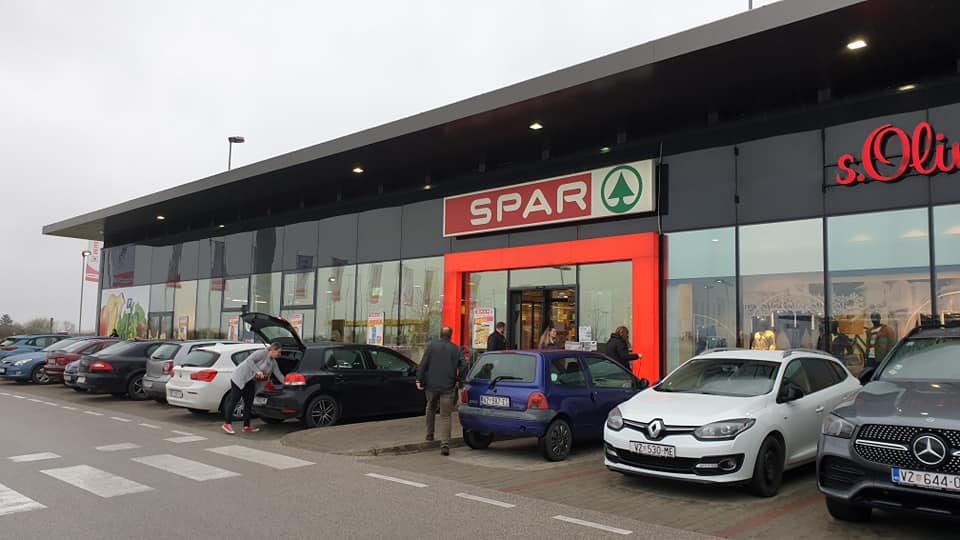
Stories of panic buying of items such as toilet paper have done the rounds all over the globe, with Australians distinguishing themselves in this particular sport.
Stories of panic buying in Croatian supermarkets have started to circulate, so I decided to see what the situation was on the ground this afternoon here in Varazdin, a city close to the Slovenian border. Varazdin has four confirmed cases of coronavirus and, along with the rest of Croatia, it was announced today that schools would be closed for an initial two weeks from Monday. So how was the panic buying in reality?
First stop, Spar.
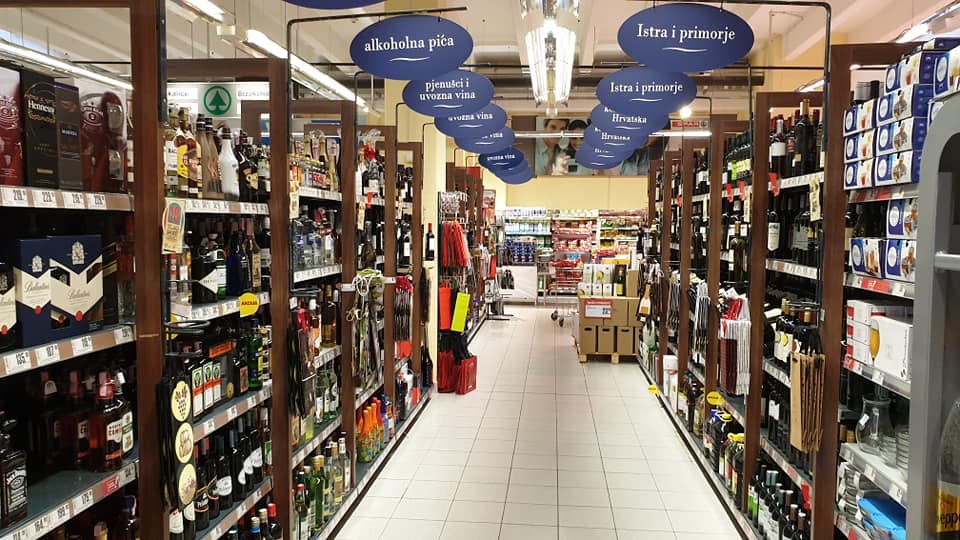
At least if there was no food, we would be able to drown our sorrows.
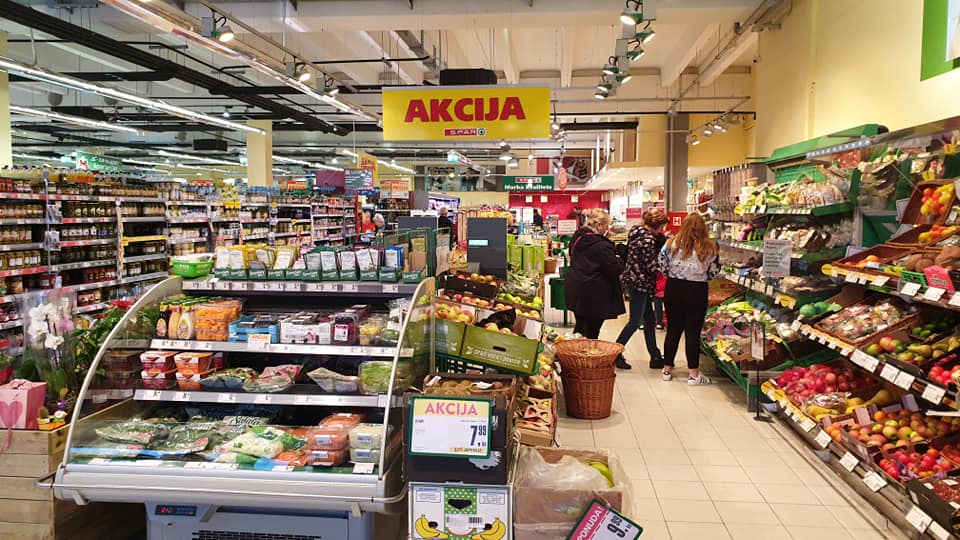
But food was indeed plentiful.

And, for from panic buying, trolleys were not overloaded, and queues were short.
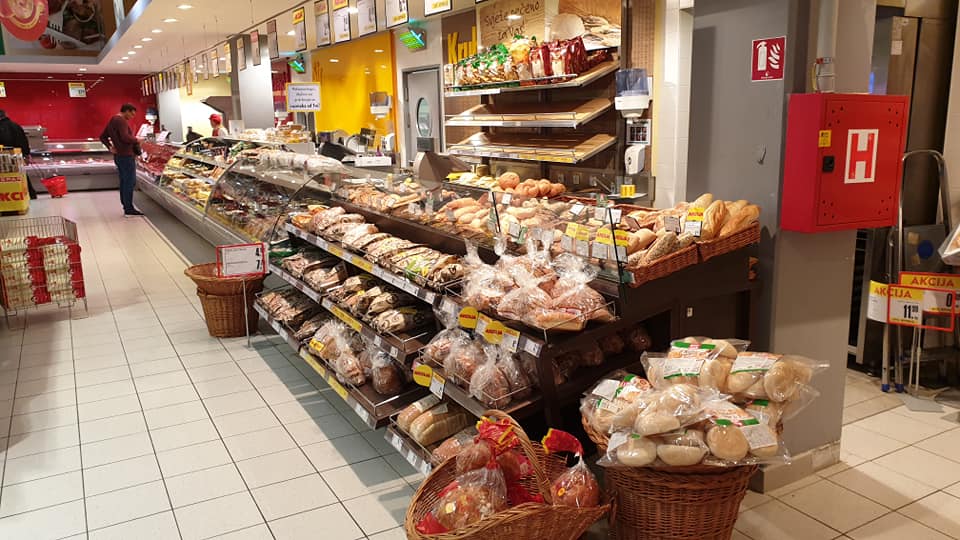
Bread was plentiful.
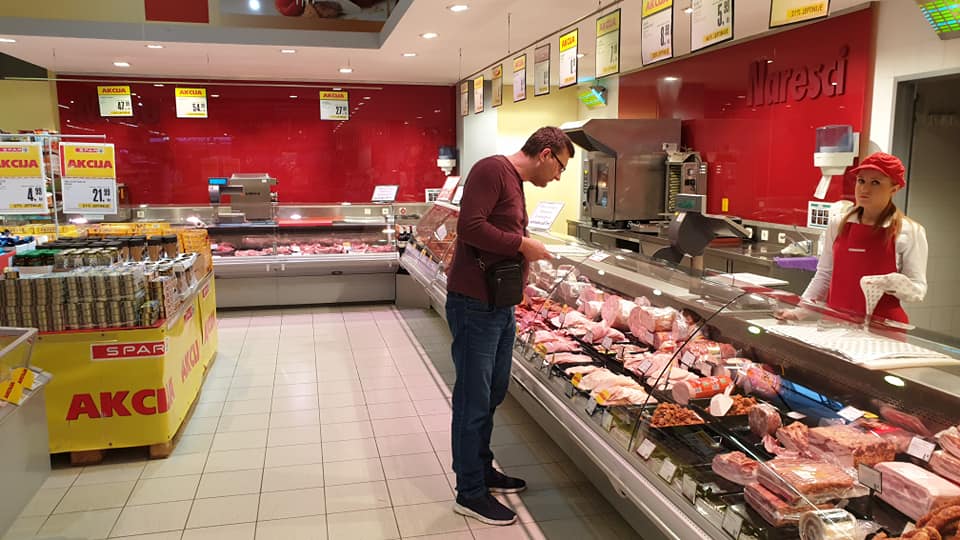
As was the selection of fresh meat.
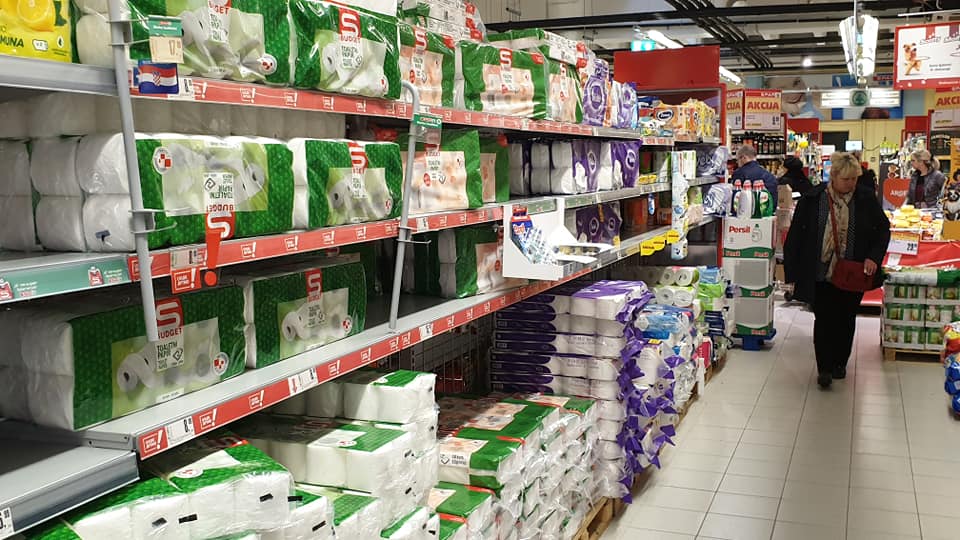
And then the most important item, it seems - are you watching, Australia?
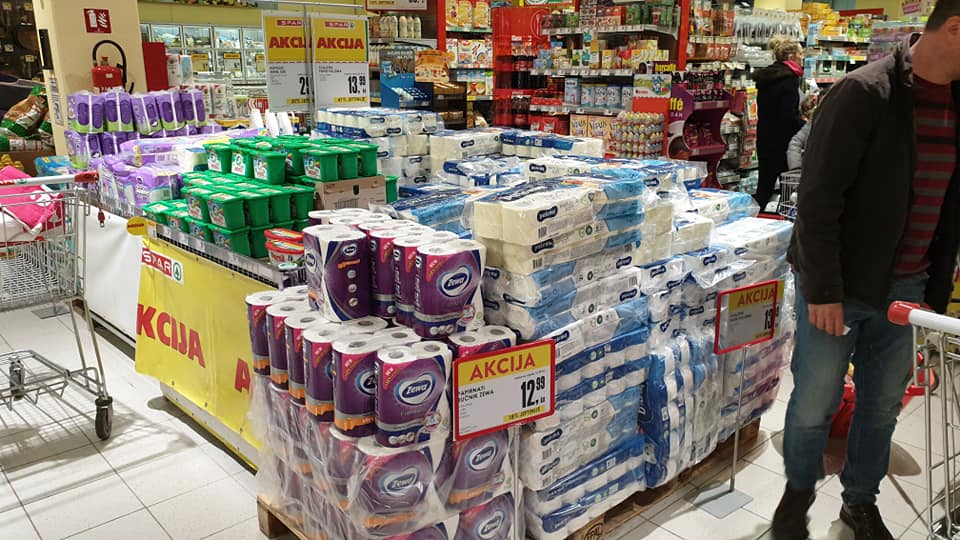
So much toilet paper, in fact, that there as an extra pallet in an aisle, with discount sales. Who would have thought!
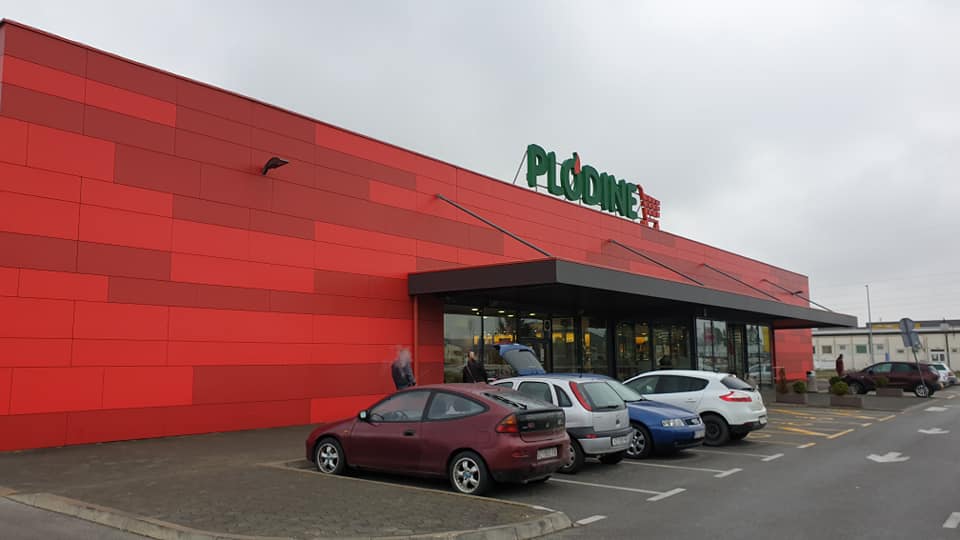
Off to Plodine.
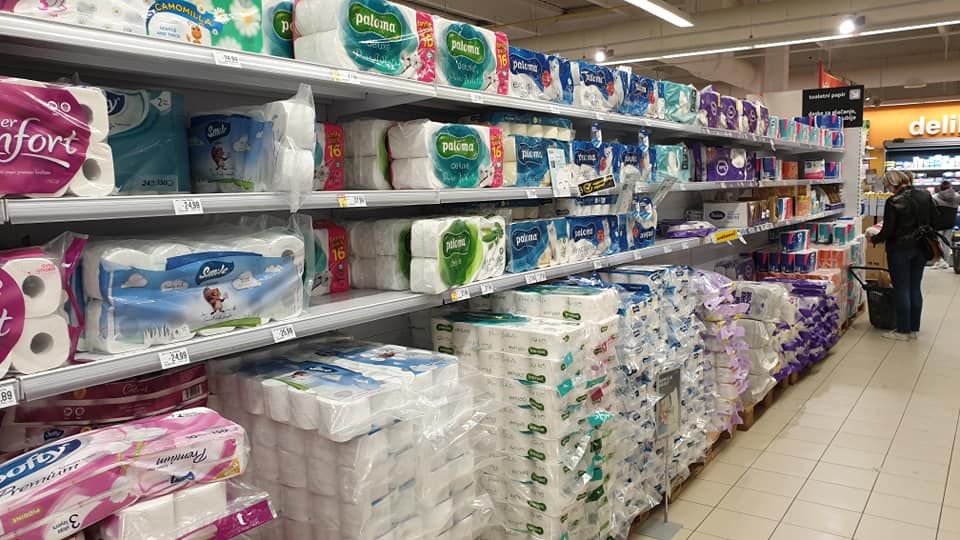
Toilet Paper Heaven!
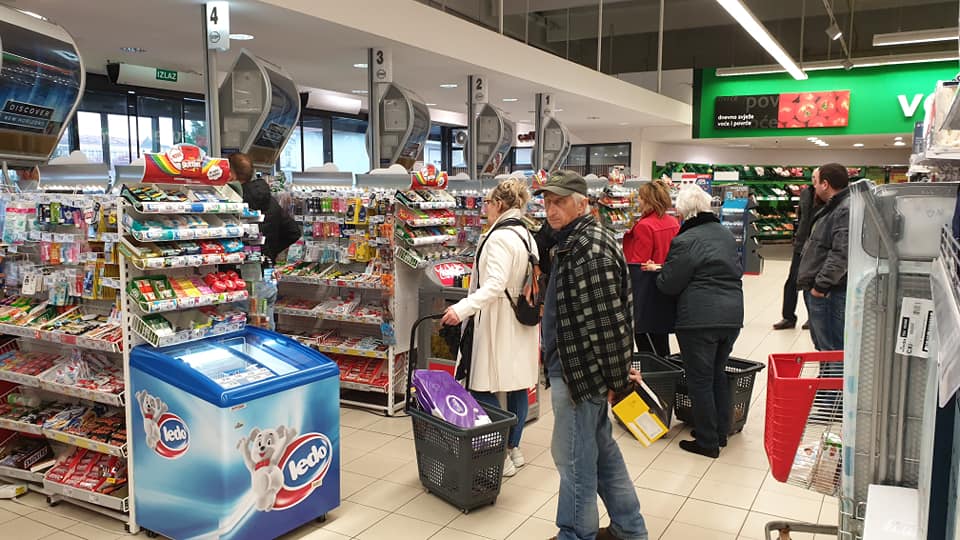
Nothing out of the ordinary about those queues.
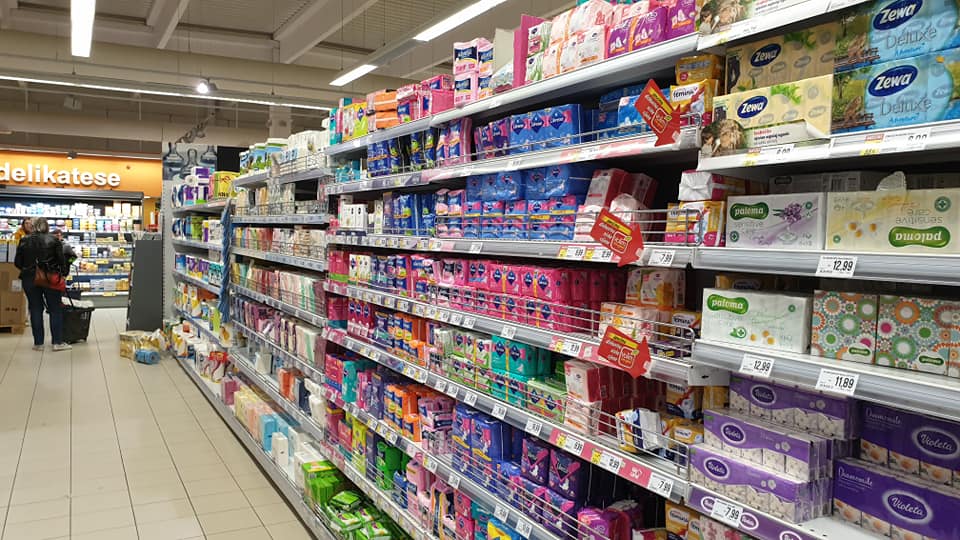
And plenty of tissues and other sanitaries.
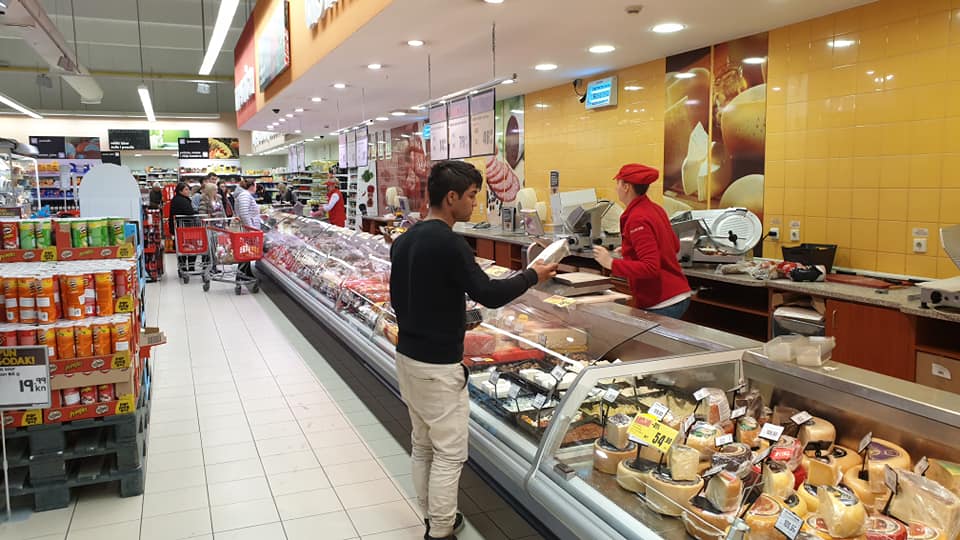
Plenty of choice to stock up on.
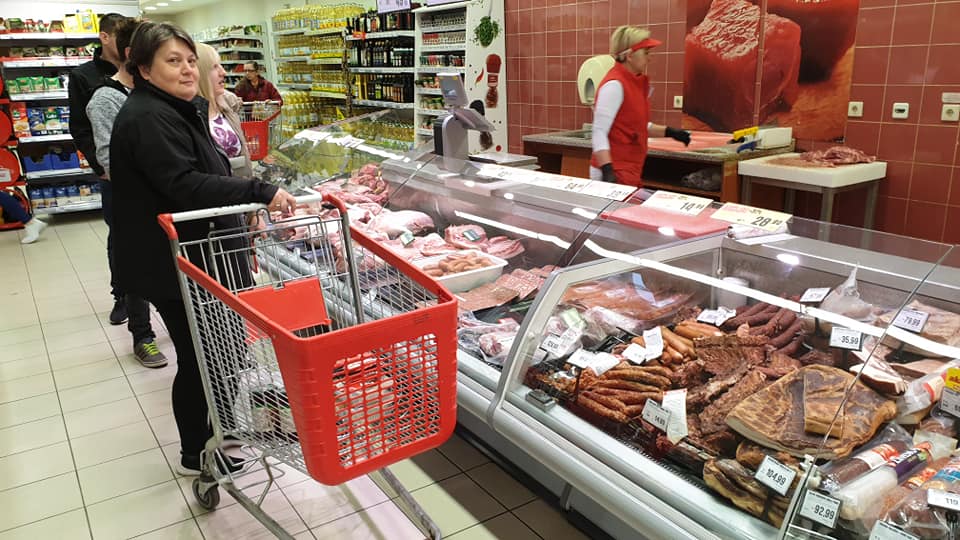
Including a healthy meat selection.

Off to Lidl.

A nice welcoming bread selection.
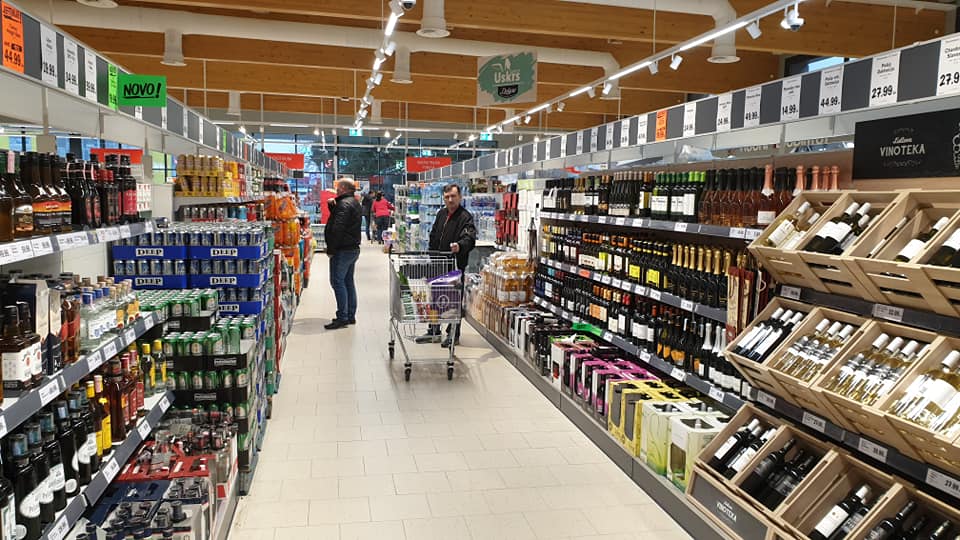
I fought my way through the panicked crowds.
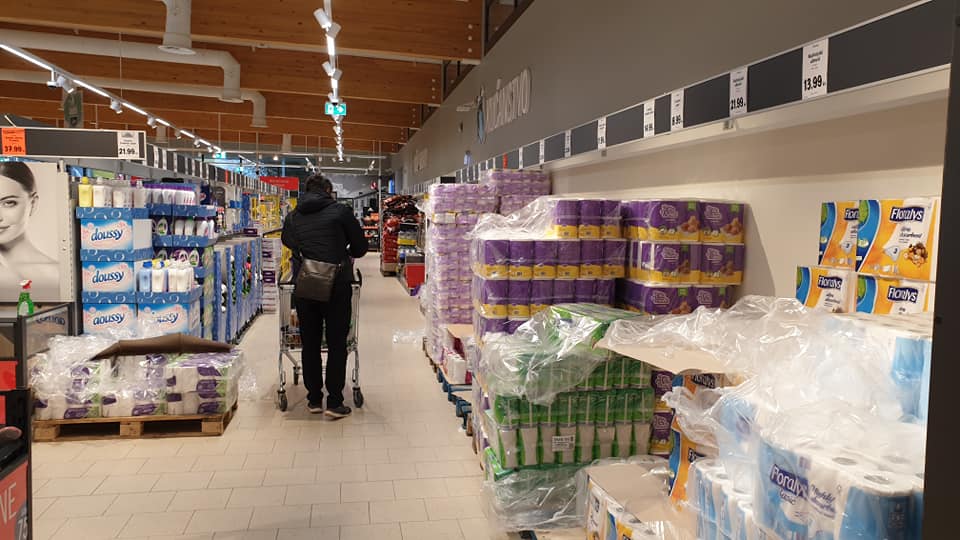
Mercifully, for any visiting Australian tourists, there was still some dunny paper for sale.
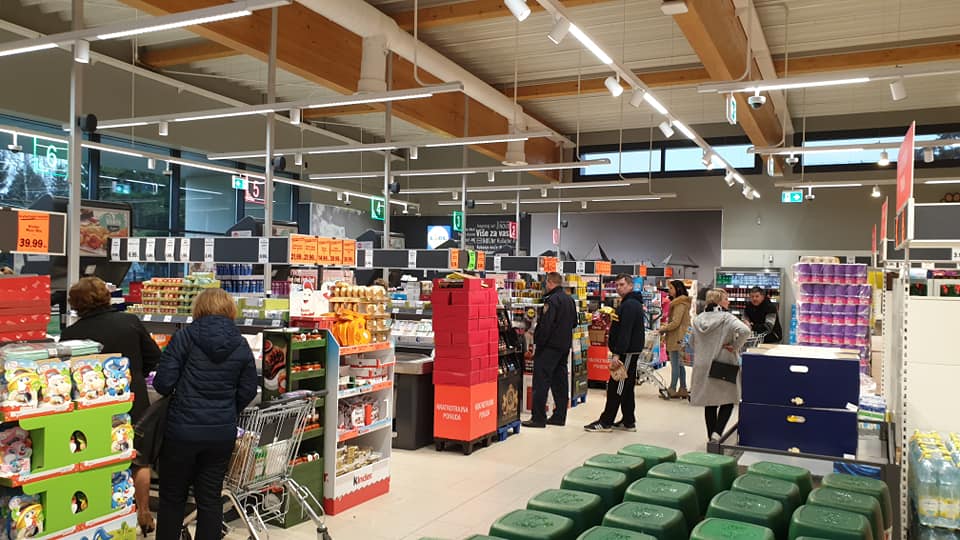
And the sort of waiting time that this impatient shopper can deal with.
Keep Calm and Carry On. Croatians know well how to survive hardship and crisis, as their recent wartime experiences will attest to. If hard times come, Croatians will adapt, as they always do. The situation here in Varazdin is very calm, and as long as we all stay calm, we will avoid the panic. And if we avoid the panic, half the battle is won.
For the latest on the coronavirus crisis in Croatia, follow the dedicated TCN section.
Coronavirus in Croatian Football: Rijeka and Istra Without Fans, Lokomotiva Limiting Spectators
March 10, 2020 - A closer look at how the coronavirus outbreak is effecting Croatian football.
Following the announced measures of the Croatian Civil Protection Staff from March 9, the relevant bodies of the Croatian Football Federation (HNS) issued instructions for playing football matches in the following period.
The following instructions have been determined by the leadership of the Croatian Football Federation, headed by President Davor Šuker and Executive Director Marijan Kustić, HNS Executive Board, HNS Medical Commission with President prof. Dr Dragan Primorac, HNS Competition Commission led by President Ante Vučemilović-Šimunović, Commission of Football Referees with President Anto Kulušić, HT First League Competition Commissioner Josip Brezni and HNS Security Commissioner Miroslav Marković:
1. It is obligatory to adhere to all decisions, measures and recommendations which he has prescribed and which will be prescribed by the Civil Protection Staff of the Republic of Croatia or other competent state institutions.
2. Considering the HNS competition calendar, all competitions under the HNS's jurisdiction shall continue with or without spectators.
3. Match organizers are obliged to fully respect and implement the measures of the Civil Protection Staff of the Republic of Croatia.
4. We emphasize the obligation of the organizers to obtain the consent of the County Civil Protection Headquarters and the competent Institute of Public Health regarding the fulfillment of the prescribed conditions for the organization of the match before the matches.
The Croatian Football Federation will continue to closely monitor the situation with the epidemic of the new SARS-CoV-2 coronavirus and will, if necessary, determine new measures and issue new instructions, which will be notified to the football family and the public promptly.
In accordance with the recommendation of the Civil Protection Staff, the opinion of the County Institute of Public Health of Istria County and the decision of the Croatian Football Federation to continue the competition, Istra 1961 announced that its 27th and 28th round HNL games, scheduled on March 14 and 21, will be played without spectators.
On Saturday, March 14, Rijeka will visit Pula to play Istra, while a week later, Hajduk will visit Aldo Drosina Stadium.
"Both games will be played without the presence of spectators and there will be no ticket sales," the first-league team from Pula said.
The Istrian Institute of Public Health on Tuesday issued special recommendations to prevent the coronavirus epidemic, which, among other things, delays all outdoor and indoor gatherings, from children's events and birthdays, to sports, cultural, business and other events.
The Istra decision was only the first since Rijeka and Varazdin later came forward. Both have suspended ticket sales for their next home games.
Varazdin will host Dinamo on Sunday, March 15, and three days later, Rijeka will host Osijek in the Croatian Cup semi-finals. Both Varazdin and Rijeka have stopped selling tickets for those duels.
Lokomotiva will host Osijek at Kranjceviceva stadium on Friday from 6 pm.
'According to the published measures of the Civil Protection Headquarters of the Republic of Croatia, NK Lokomotiva, as the host of the match, will adhere to the maximum extent and implement all instructions, measures and recommendations regarding the organization of the match by the County Civil Protection Headquarters and the Institute of Public Health.
The maximum number of viewers will be 1,000.
NK Lokomotiva will provide checkpoints with disinfectants and urges viewers to refrain from the usual non-verbal communication that involves shaking hands and avoiding closer social contact.'
The club also urges fans with respiratory illness and/or fever (greater than 37.5 C) not to attend the match.
Tickets are purchased exclusively at the stadium ticket office on the day of the match, two hours before the start of the meeting (from 4:00 pm).
Hajduk will play against Inter Zapresic at Poljud on Sunday at 3 pm as part of the 27th round. It is the first of two championship matches to be played in front of the empty stands because of the penalty that HNK Hajduk received for violations committed during the Hajduk - Dinamo match played on March 4.
To read more about sport in Croatia, follow TCN’s dedicated page.
Svijet Prirode (World of Nature), a Healthy Hidden Diamond of Varaždin Breg
January 6, 2020 - Looking to get back to nature and a healthy start to 2020? A wonderful family business highlighting Croatian indigenous goodness - Svijet Prirode near Varaždin Breg.
The Lukač family is the proud owner of a little zoo with various native species of Croatia. They have about 80 animals who enjoy living in a spacious meadow and eating healthy food. This heaven on Earth is in Varaždin Breg, along the old Varaždin-Zagreb road.

Back to 2014
About five years ago, Nikolina and Josip wanted their kids to eat healthier, so they got a donkey, goat, and sheep to get milk and to make cheese. After some people heard that the Lukač family owns different kinds of animals, not just domestic ones, people start to call them and asked them if they can come to visit. Step by step, they started gathering many species of animals. As they met one guy in Hrvatsko Zagorje and wanted to buy a turkey (Zagorska purica), he told them something that led to all that they have now. He said to them that not long ago, a bus full of Chinese tourists came to his place to see his turkeys. Then Josip said: “Why wouldn't we have a private zoo with the native species of Croatia? People could see all of those animals in one place!”
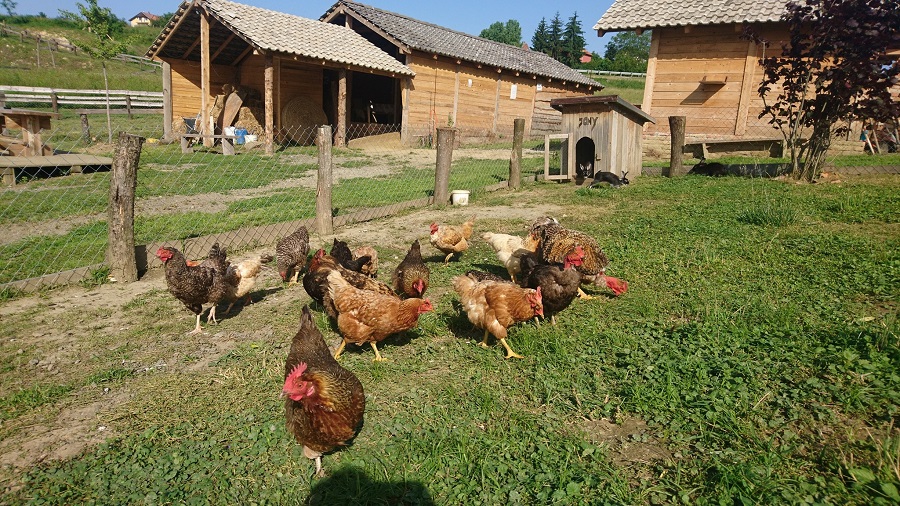
This whole thing started five years ago as an OPG (Family Farm), but as they also organize children's birthdays, they needed to open a company. All those years, they are continually making something new, building wooden houses, or extending the fences. Mostly they do it all by themselves or with the help of close family members. They have increased not only the numbers of animals but also in the area of the property. Now their animals are free to roam in an area of about 55 thousand square meters! Every animal has its part of the meadow and wooden house. The walking trail is about one kilometer long.
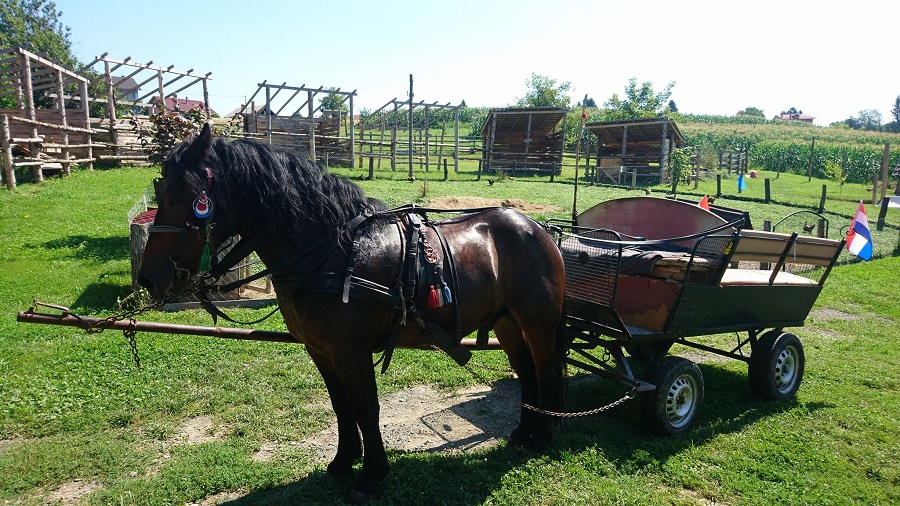
Ever since Josip was a kid, he wanted to work with animals. A combination of circumstances led him to have his company and worked in it for about four years. He was so disappointed with people that he decided to leave this job and start working with animals. I quote (with permission): "I wanted to show certain people that it's easier to work with animals than with livestock."
...
Living with 80 animals, a man could think they get up at 5a.m., but...
…but they get up whenever they want. Their schedule depends on kids' obligations such as kindergarten or school. In the summer, there isn't a lot to do. They give animals food and water in the morning, and in the evening, they put the animals in their cottages. In the winter, it is a different story because the animals are in cottages, so Josip does the cleaning both in the morning and evening. It takes him 2-3 hours to do that. But, he said with the smile: "I am tired in the morning, of course, but when I come to these animals, I feel relaxed more than anything else."
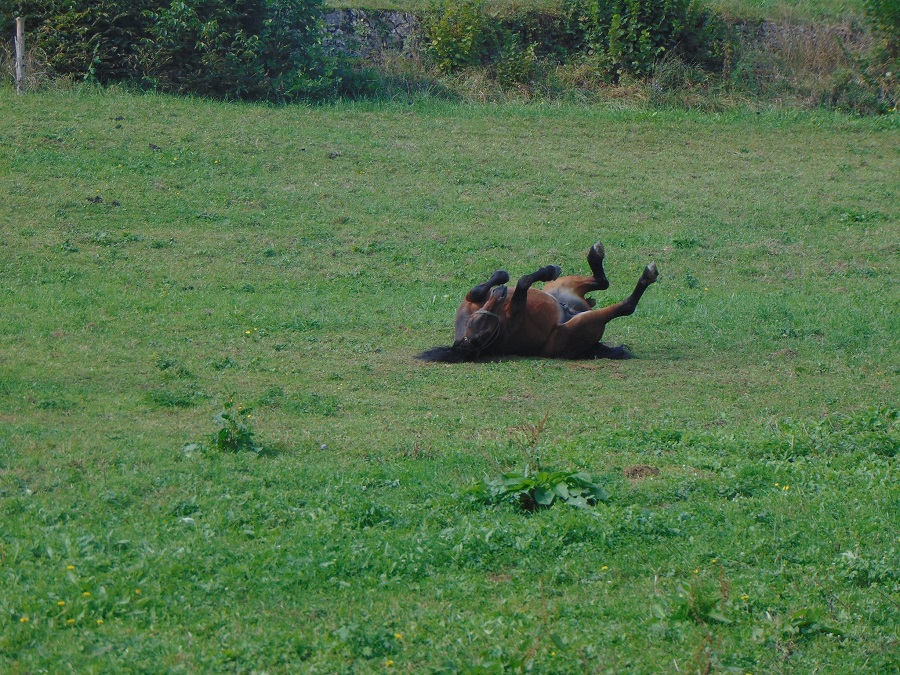
Kids (ages 1, 3, 5, and 7) show interest in animals and spend their summer holidays with them. These kids are raised without phones, computers, or PS4, but they aren't sad because of it. They sincerely enjoy playing on vast meadows along with the sheep and donkeys.
Out of the many activities they organize, The Christmas Story steals the show
They host children's birthdays which are led by entertainers, while Nikolina and Josip provide food. The best indicator they are doing a great job is that 90% of the kids who once celebrated their birthday there, come back the next year. As the saying goes, children are the most honest beings, so it is all clear here. ;)

Besides the birthday parties, they organize summer children camps, a search for Easter eggs, Chestnut evenings (popularly called Kestenijada), weekends with knight orders, carnival days... But when it comes to their favourite activity, The Christmas Story is their favourite. Three years ago, Nikolina was Mary, and Josip was, well... Joseph. They even had a baby back then who was in charge of being Jesus. This was their first big deal as a family. Today, they have a whole program and people who are acting, making fire show, or play drums. Traditionally, at the end of the program, visitors release lanterns of good wishes.
Big dream and none of the help from the county
The county loves to promise them support and publicity for their events, but – as is often the case in Croatia – this support remains as just promised. Nikolina and Josip remain disappointed about the county, so now they rely on themselves and close friends. Their plans for next year include gathering all of the native species of Croatia. Besides that, they would love to have an orchard and plantations of Croatian species of trees. Among the plans for the future are more wooden houses for barbeque, sports terrains, and even some little apartments.
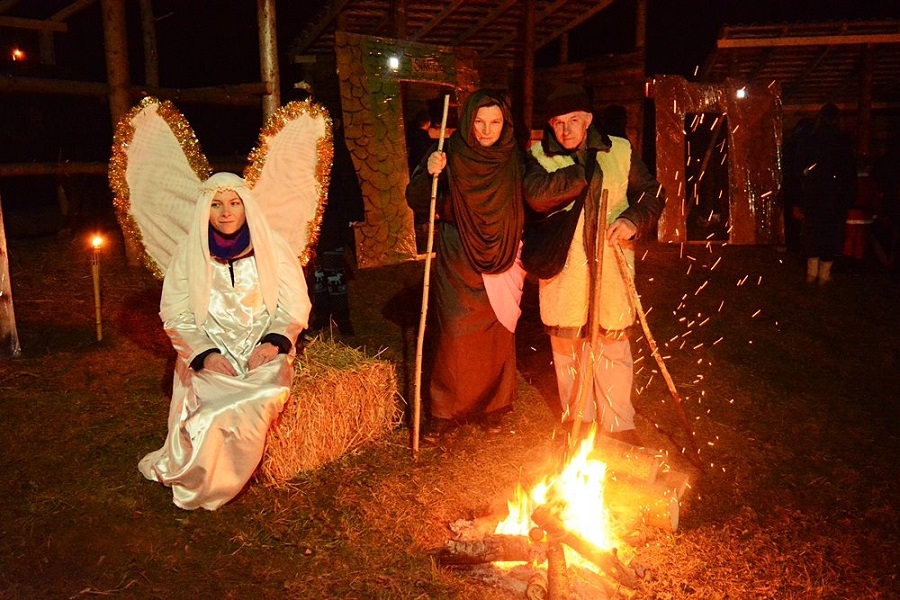
The reason why this what they do is so special lies in their unique approach to guests. They don't have an ordinary playground for children, nor do they want one. Parents are sometimes disappointed by this fact. Yet they stayed amazed at how their kid plays on his own without any toys around. While parents enjoy their coffee with the owners of the farm, children find something exciting or play with the animals. "You could often hear parents saying: "Oh Gosh, I forgot that our kid is also with us here!" and that is what makes us happy."
What visitors appreciate the most is the friendly and open relationship the owners have with them. If visitors want to discover the farm by themselves, they can. But if they prefer to have the owners as their guide, Nikolina and Josip will gladly join them. After they see everything they want, they enjoy the coffee, ice cream, beer, mulled wine, or something else.
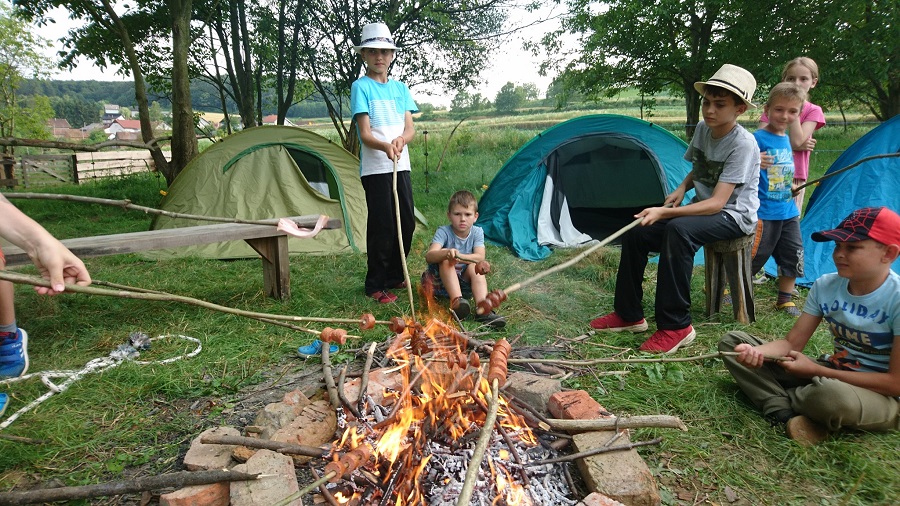
The Lukač couple was concerned about having a farm near a road, but visitors often say to them that there is no feeling that they are near the road. They are completely relaxed and pay no attention to passing cars.
And if you are still making you mind about visit them, check this out:
Every group of kindergartens and schools plant their trees. Soon there will be educational trails with different species. For example, A Path of Acacia (Put bagrema) is already in the making.
If you have a family, this would be a perfect trip for every member. Owners said that more and more young couples like to come to their farm as a date. And if you don't have plans for Valentine's Day 2020, there will be a movie night in a cozy wooden house.
And if this story amazed you a bit more than usual, you can come and volunteer. The whole family would be happy to have you around occasionally.
Make sure you follow them on Facebook and on the official web site.
Radimir Čačić Re-Elected Alps-Adriatic Alliance Chair
ZAGREB, November 21, 2019 - Varaždin County prefect Radimir Čačić will again head the Alps-Adriatic Alliance (AAA) over the next two years, the Alps-Adriatic-Council decided in Varaždin on Thursday.
Čačić was elected Council chairman in Klagenfurt in 2017 as the first prefect from Croatia.
The emphasis in the next term will be to have big joint projects, not just small ones, financed from European Union funds, he said, adding that Varaždin County had also founded the Alps-Adriatic Association as an operational core to which all member states were invited.
AAA secretary-general Thomas Pseiner said he and his Steering Committee had approved 66 projects over the past two years, mainly for culture, but also for cross-border defence from natural disasters.
Čačić said there was interest for the northern Serbian province of Vojvodina to join the AAA.
The AAA has been active 41 years and comprises the Austrian regions Burgenland, Carinthia, and Styria, the Croatian counties Istria, Karlovac, Krapina-Zagorje, Koprivnica-Križevci, Međimurje, Primorje-Gorski Kotar and Varaždin, the Association of Cities and Towns of Slovenia, and the Hungarian county Vas.
More Varaždin news can be found in the Lifestyle section.


